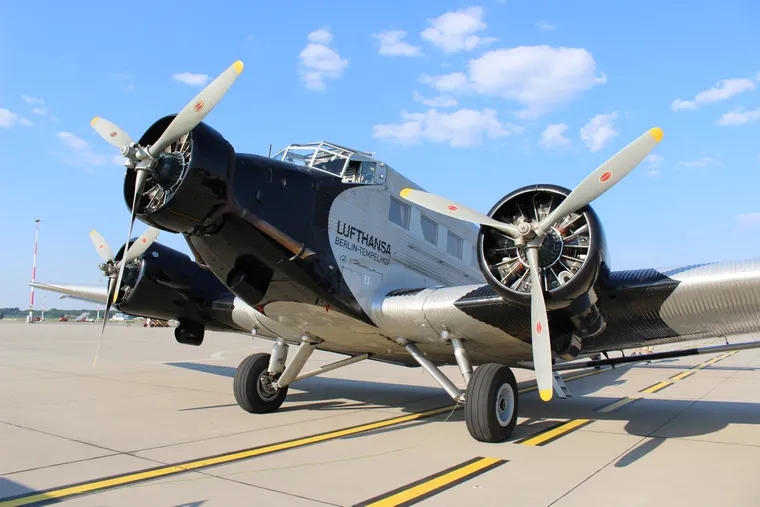Lufthansa’s gorgeous “Super Star” Lockheed Constellation is now painted and making its way to the airline group’s new Conference and Visitor Centre in Frankfurt, to sit on permanent display alongside “Tante Ju”, its restored Junkers Ju 52, built nearly 90 years ago this year.
This stunning aircraft was, alas, permanently grounded in 2018 after an inspection discovered structural fatigue too costly and complicated to fix for continued flights. But ten years ago next week, at the 2015 Aviation Days airshow hosted at the Lufthansa Technik MRO hangars at Hamburg Airport, I had the incredible experience of flying aboard her through the low skies Germany’s aviation capital.
Join us for a retrospective, with photos and with 16 minutes of video from onboard this brilliantly noisy, atmospheric aircraft.
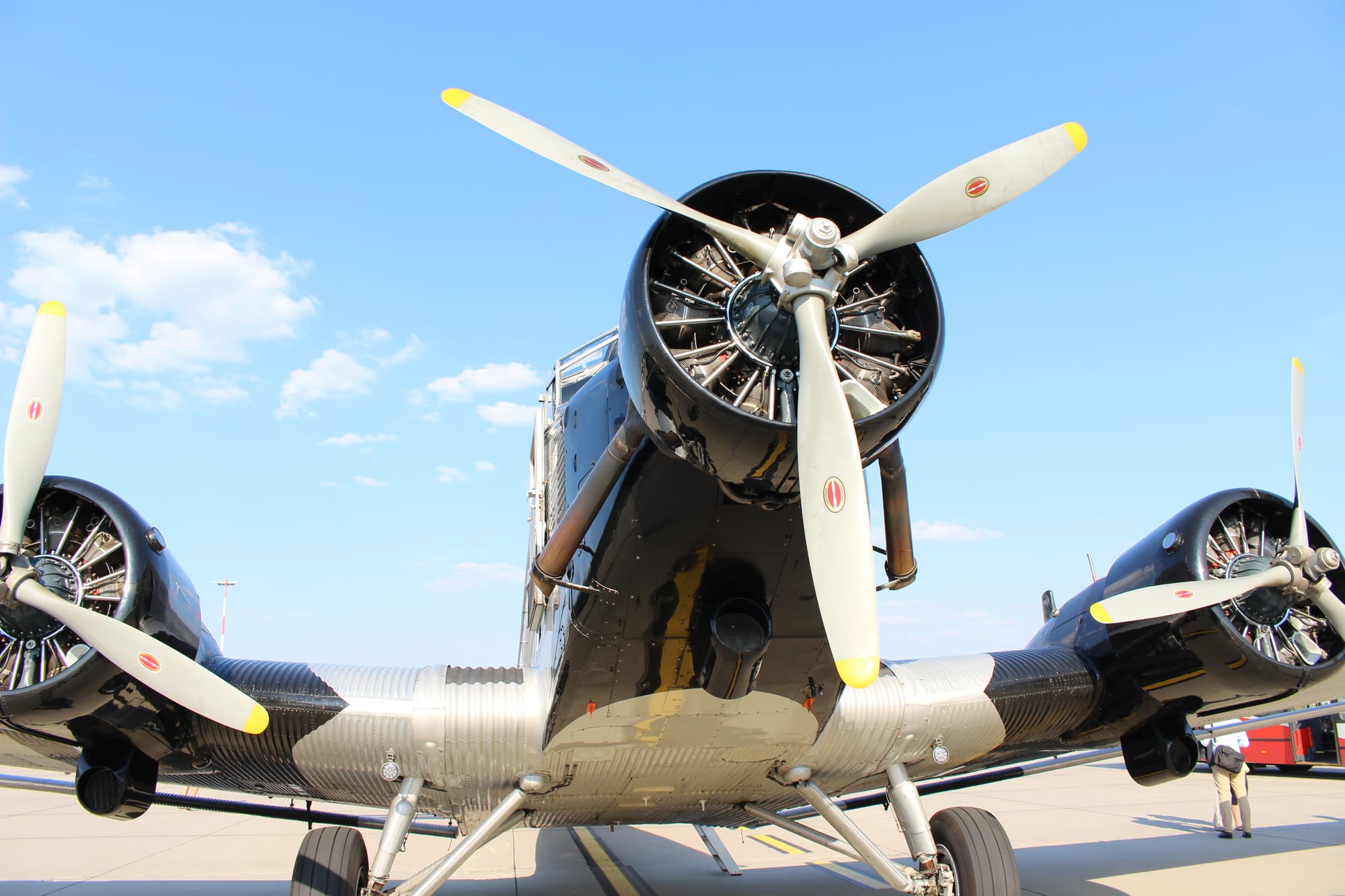
Designed as a civilian airliner, nearly 5,000 of the Junkers Ju 52 aircraft were built between the 1930s and 1950s. Early versions had just one engine, but vast majority were the trimotor variant.
An early metal-framed transport aircraft, Junkers developed the signature corrugation of the aluminium alloy airframe to add structural strength without adding heavy support elements.
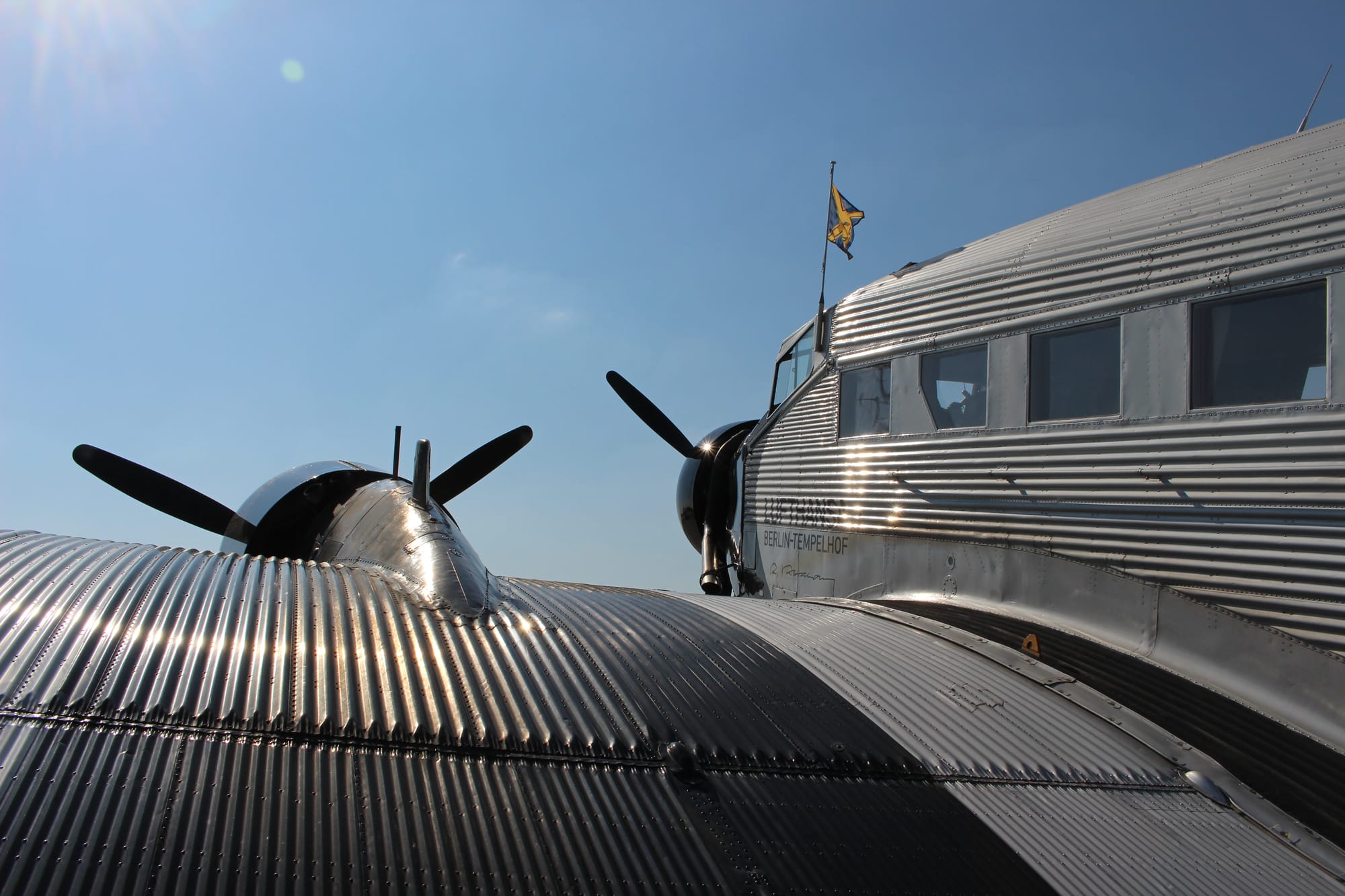
Up close, the engineering of this aircraft — then nearly 80 years old, today nearly 90 — is absolutely astounding.
Particularly striking on boarding behind the is the signature Doppleflügel (“double-wing”) design, where the trailing-edge control surfaces are part-aileron, part-flap.
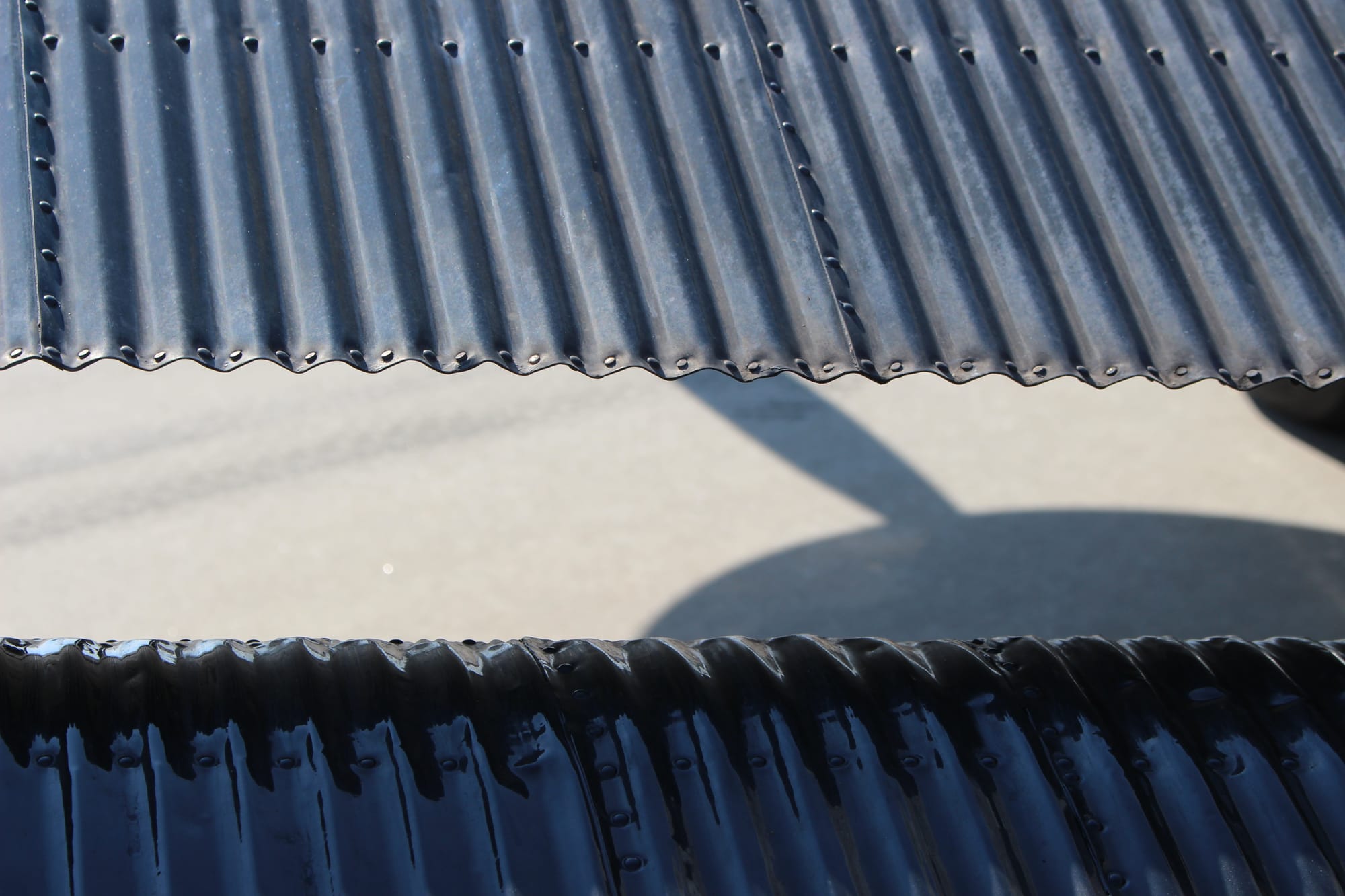
The same corrugation concept developed by Junkers would be used some twenty years later to strengthen the skin of Rimowa suitcases. Indeed, for many years the preserved Ju 52 HB-HOY carried a special Rimowa livery with Die Koffer mit den Rillen — “the suitcase with grooves” — titles.
The Junkers corrugation became such a historical signature that Lufthansa even echoed it in the thermoplastic surround structures of its first class seats in the 2000s — these bright blue seats are the versions prior to the dark blue generation introduced with the A380, and one generation further back still from today’s Allegris First/FICE (Future InterContinental Experience) products.
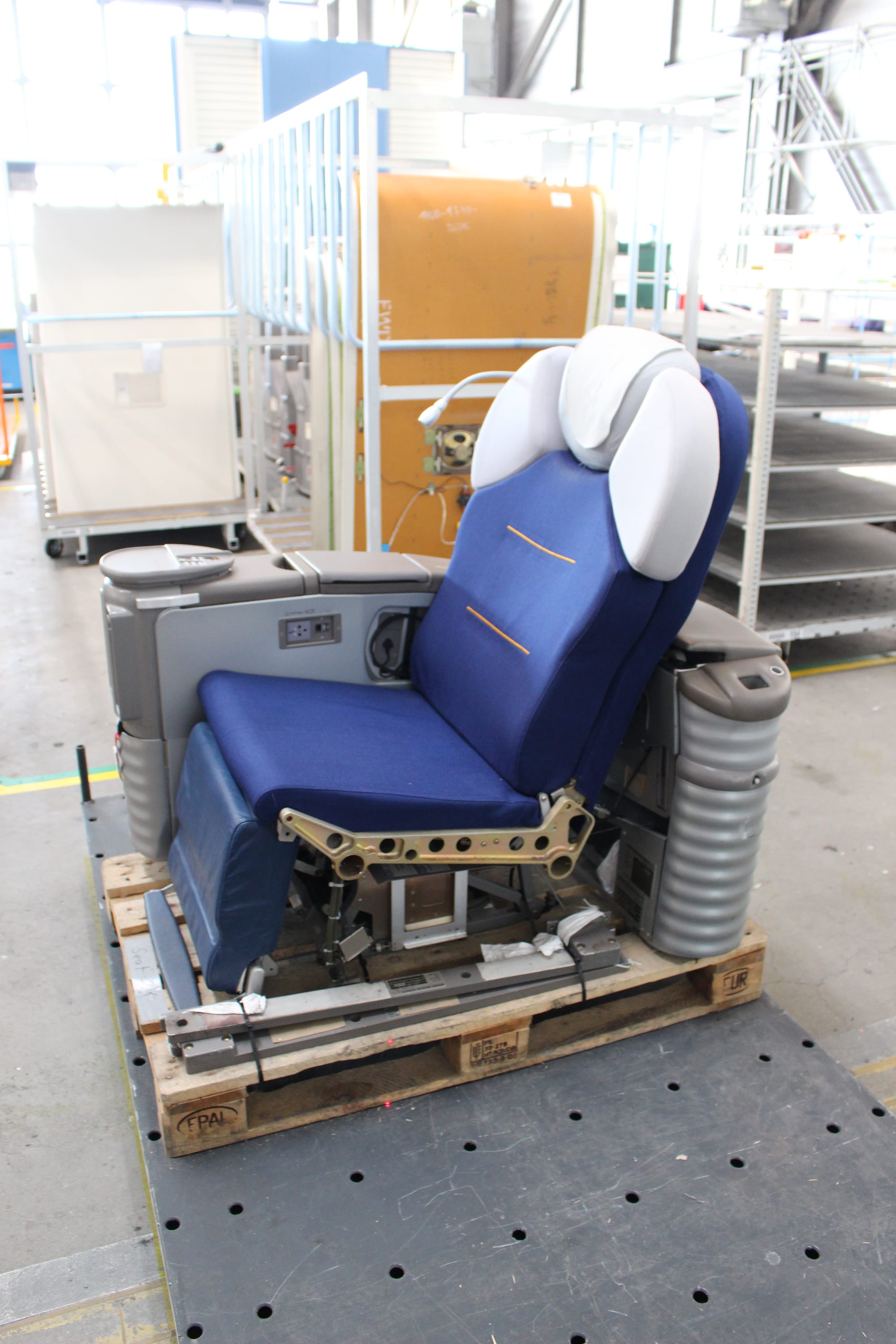
Lufthansa’s Tante Ju, or “Auntie Ju” in German, is also known by her original D-AQUI registration, but later re-registered as D-CDLH for modern German aircraft registration weight classification reasons, with her original registration allowed to remain.
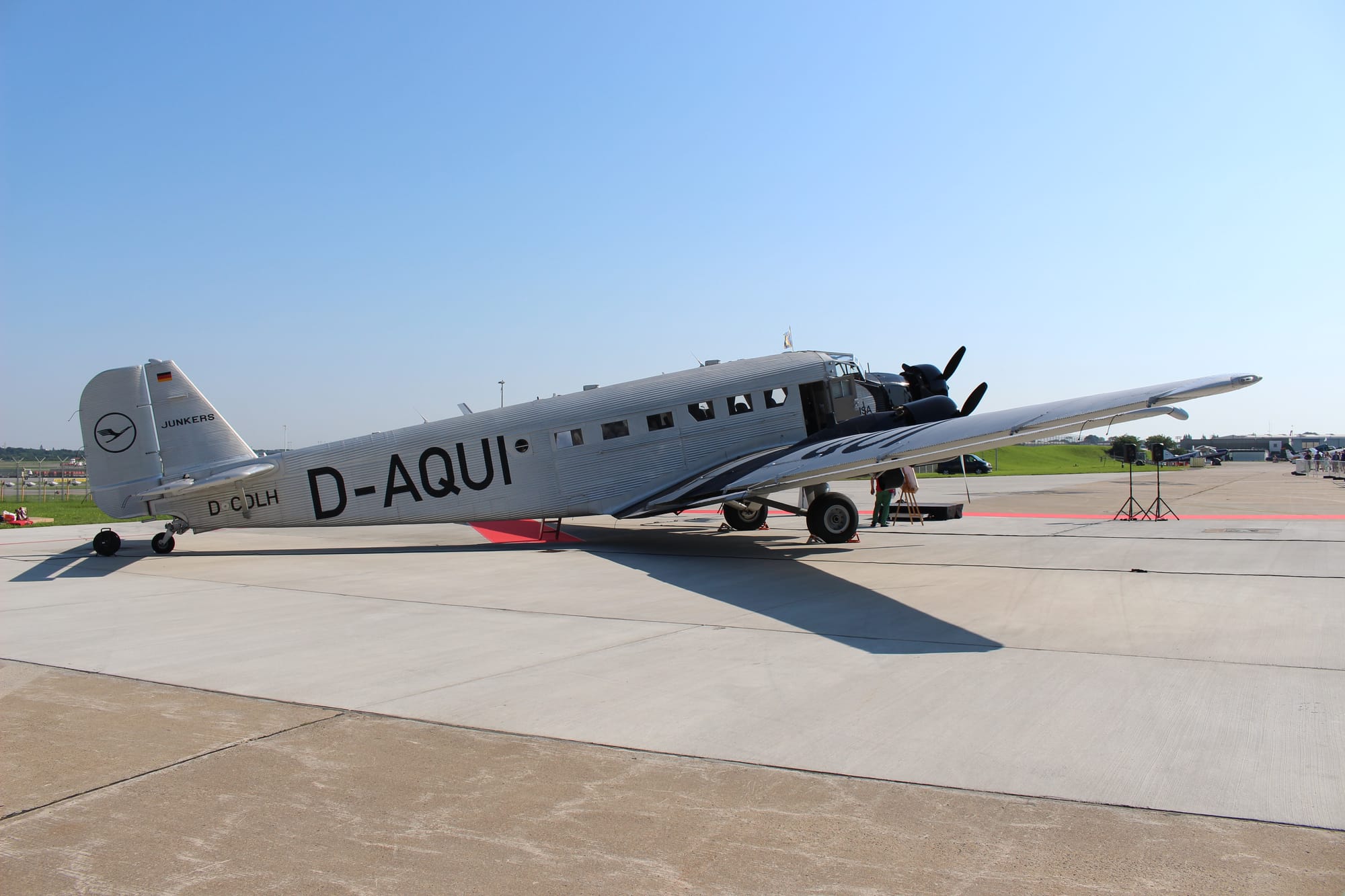
Her first flight from the Junkers plant in the Dessau, a small city between Berlin and Leipzig in east Germany, was on April 2, 1936, and handed over to the then Deutsche Luft Hansa just over a week later.
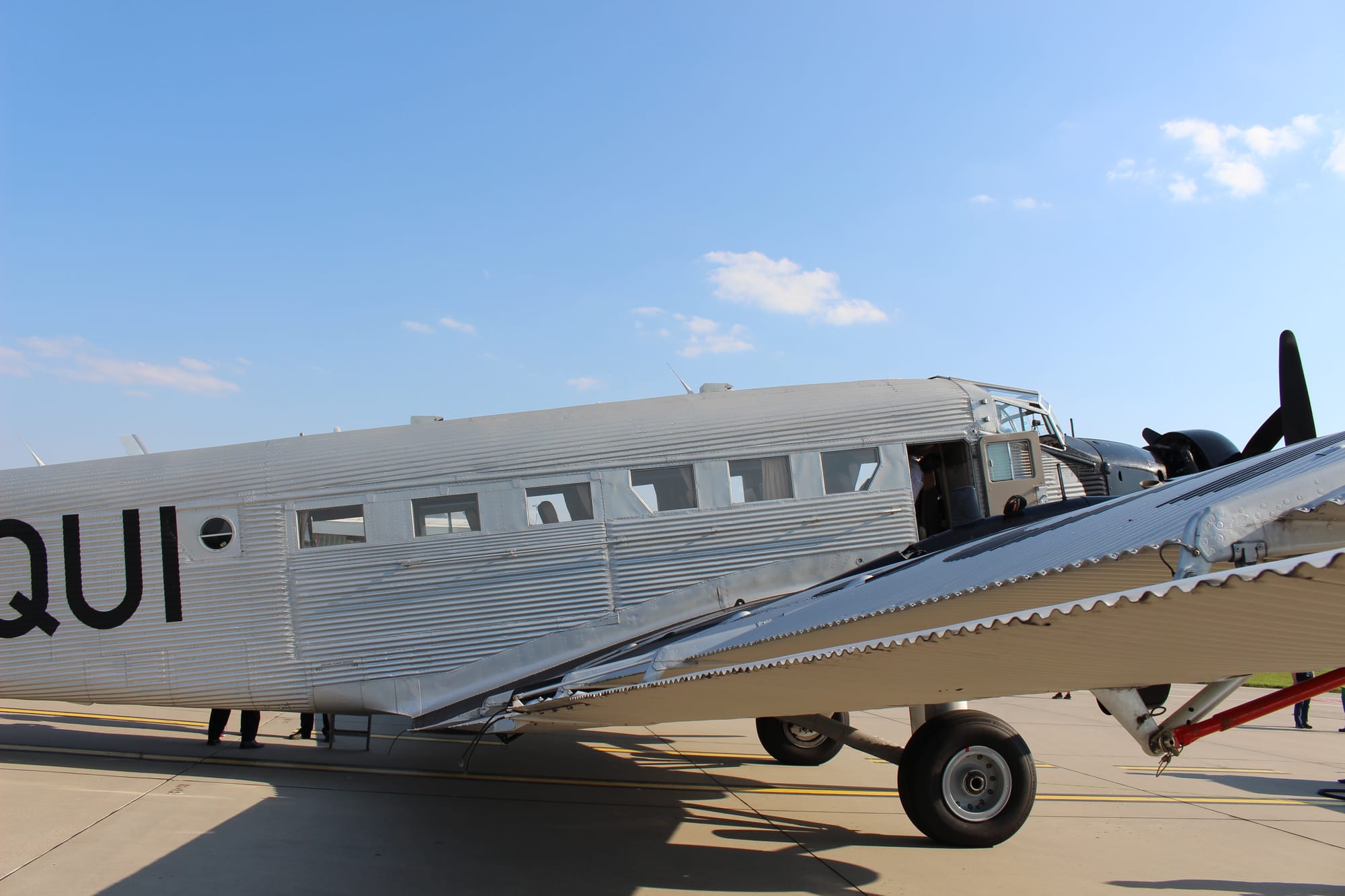
Tante Ju was originally fitted with pontoon floats in order to be used as a seaplane, but would fly with Lufthansa for just a few months before being passed to Norwegian airline DNL — Det Norske Luftfartselskap Fred. Olsen — a predecessor of what is today the multinational Scandinavian airline SAS.
After an eventful commercial lifespan that ended in Ecuador in 1962, the aircraft was preserved in the United States and operated at airshows as “Iron Annie” under the US registration N52JU.
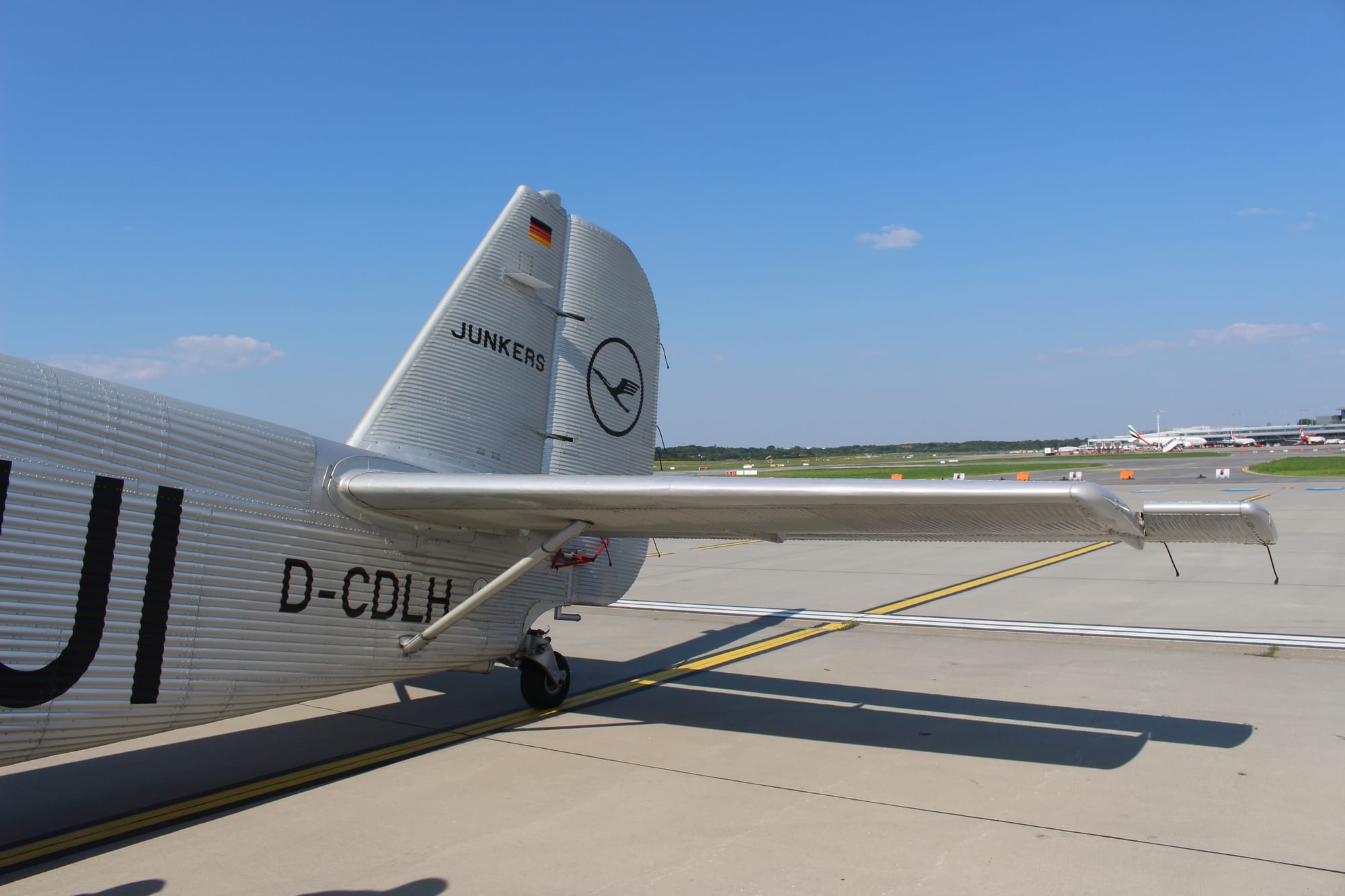
In 1984, Lufthansa reacquired the aircraft to celebrate its 60th anniversary, restoring it at the Lufthansa Technik facilities in Hamburg — from where, thirty-one years later, I gathered among an excited group of aviation journalists and enthusiasts to fly her across Hamburg.
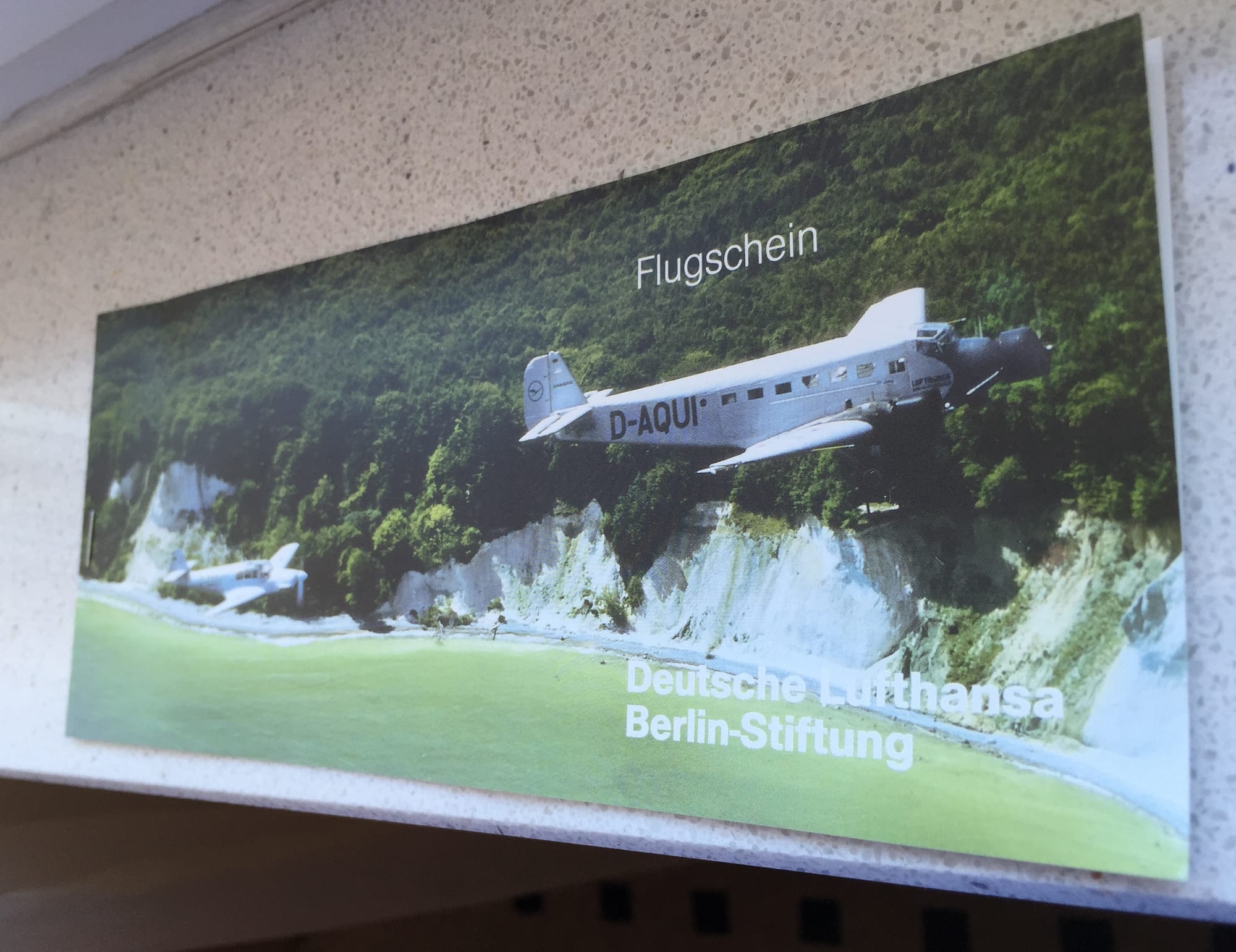
Tante Ju was operated by the Deutsche Lufthansa Berlin-Stiftung — Stiftung meaning “foundation” — that the airline founded in 1986, which issued commemorative boarding passes for its celebratory flights.
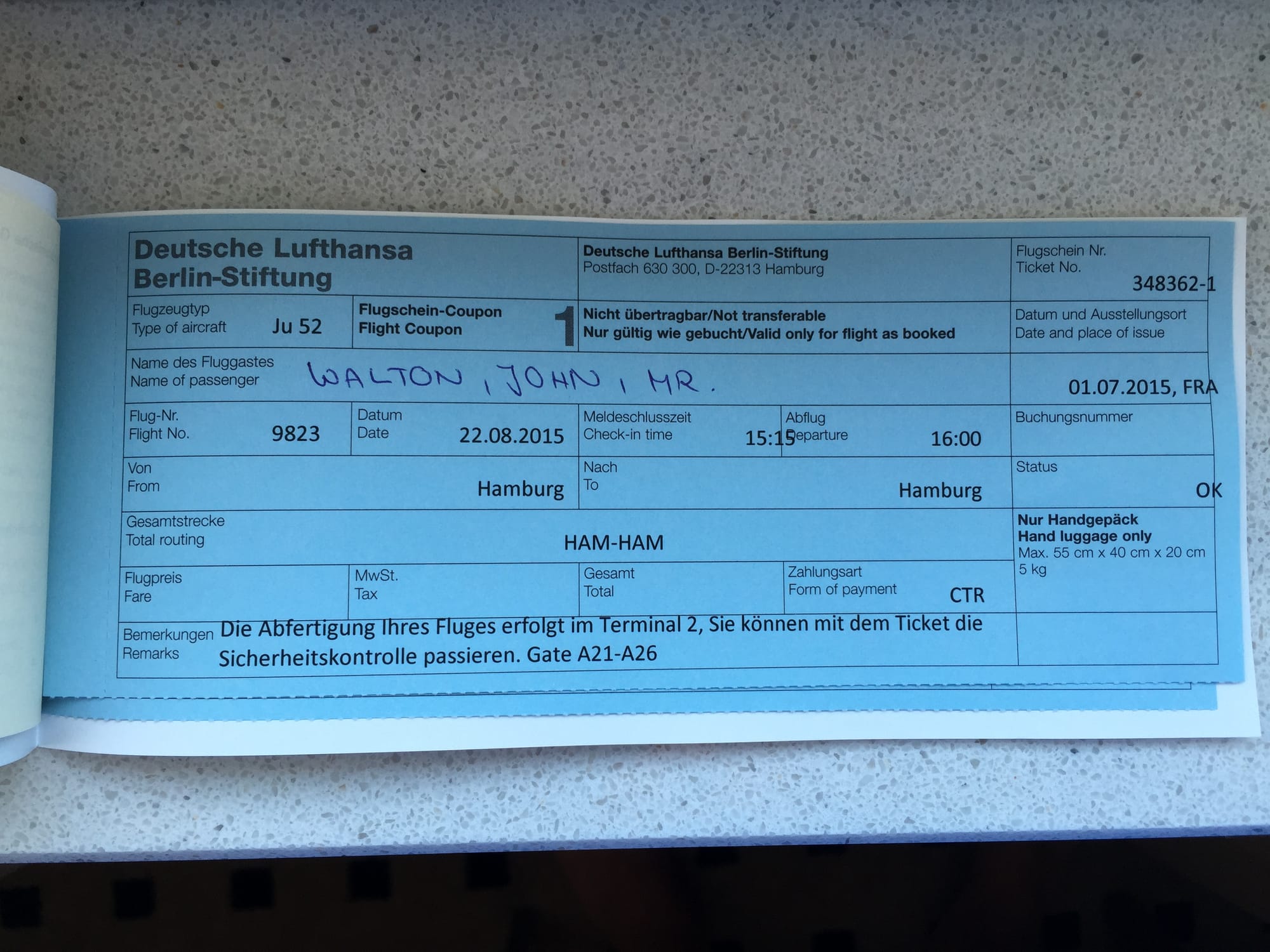
(For full disclosure, even a decade later, I was a guest of Lufthansa Technik at the Hamburg Aviation Days airshow, at which — if you can believe it — the MRO was launching its account on the then-Twitter.)
Only ten years on has it struck me that the picture used as the destination image on the departures board was taken from my seat on board Tante Ju!
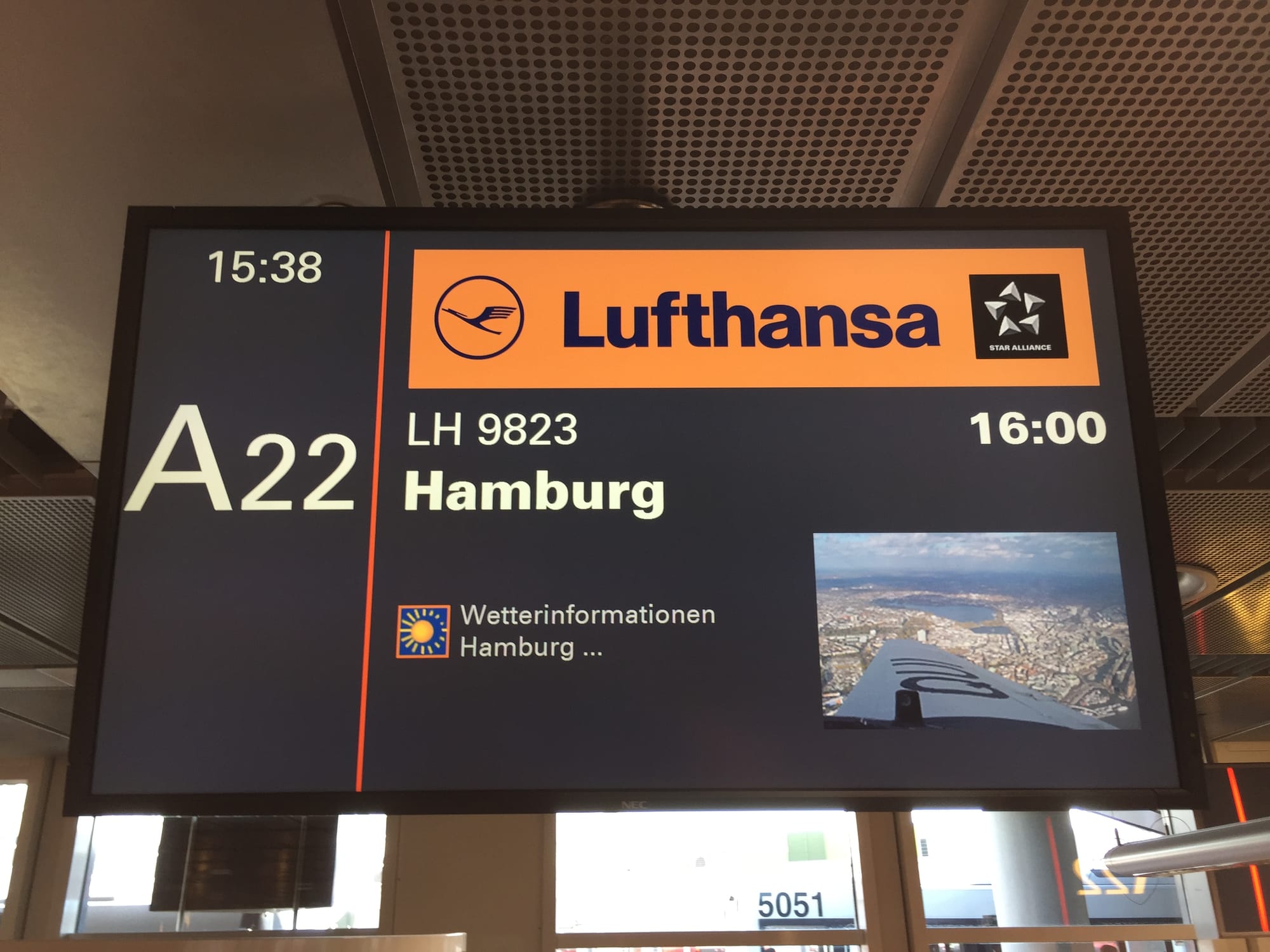
Any regular flyer from Hamburg Airport, me included, will groan at the news of their flight being assigned the A22 bus gate.
This time, though, neither I nor my fellow passengers on flight LH9823 were disappointed, very much the opposite.
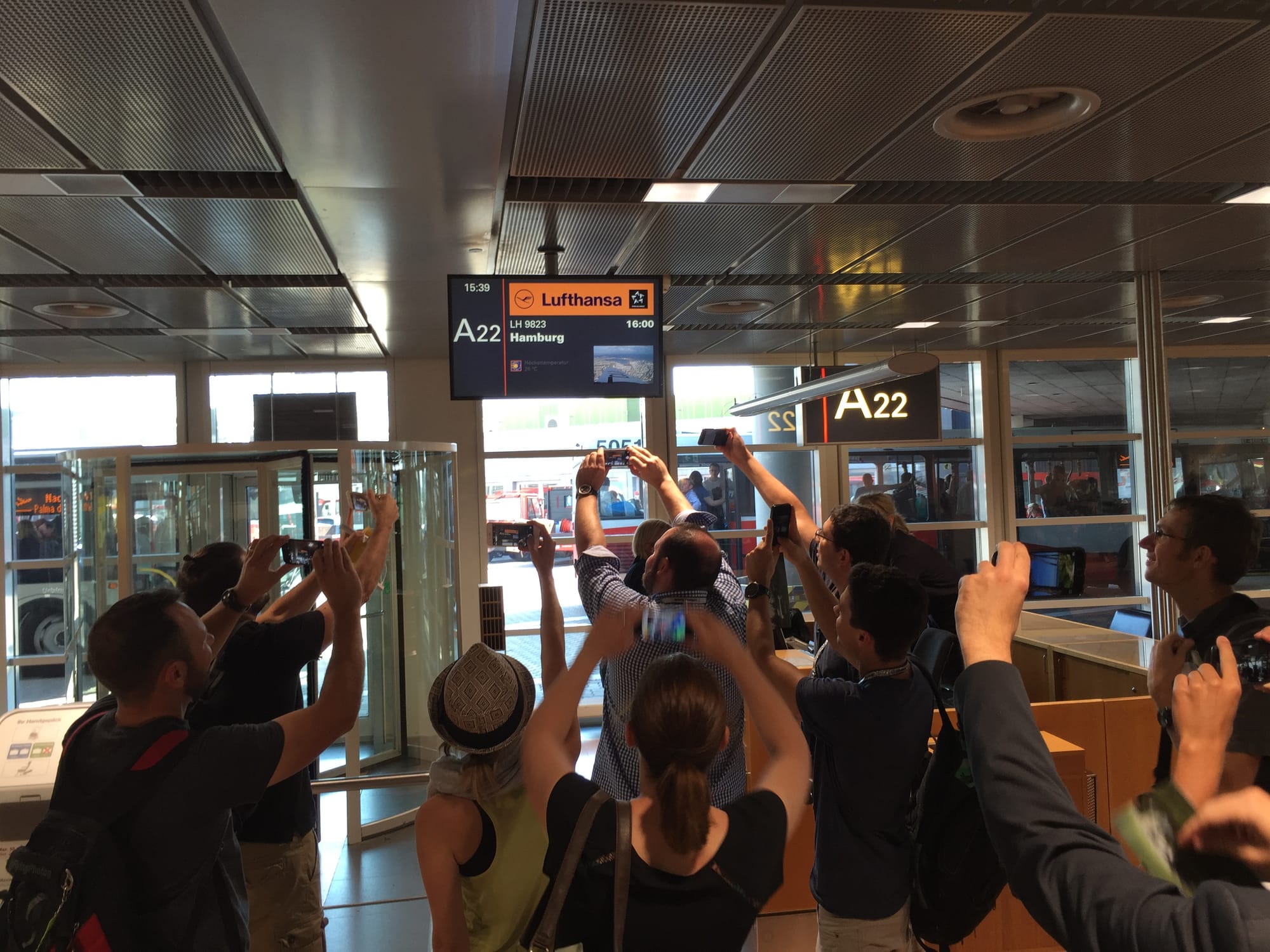
On a hot August day, Tante Ju’s aluminium skin gleamed in the summer sun on the remote Hamburg stand.
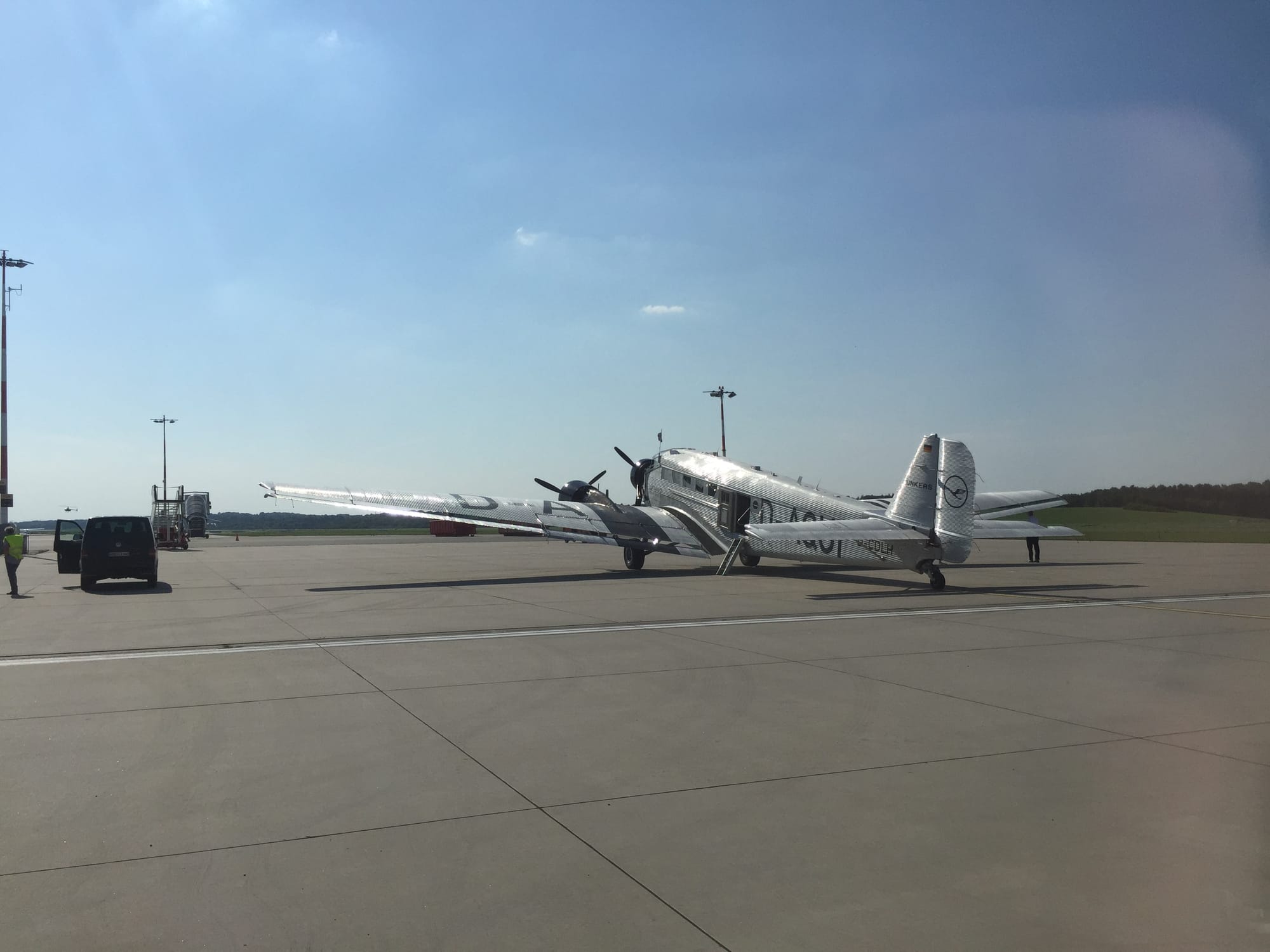
After a quick briefing outside the door from the pilots and flight attendant — singular — the flight crew performed their final checks of the aircraft.
Tante Ju’s pilots were drawn from Lufthansa’s regular pilot pool, specially qualified for this vintage aircraft.
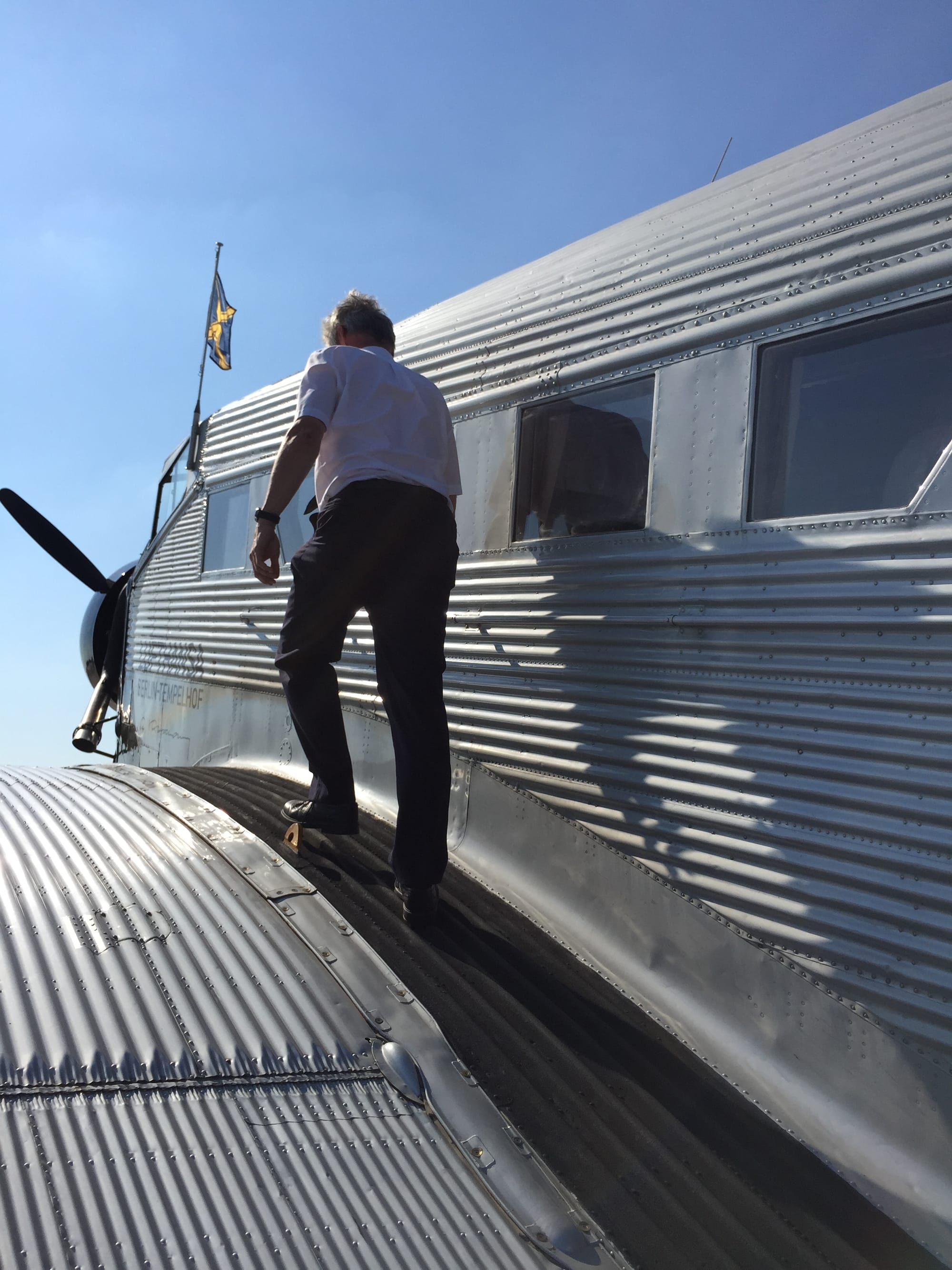
The Ju 52 cabin was just a few steps up, outfitted in a neutral beige. The seats on board were not originals, with the cabin having been sympathetically refitted to modern standards — well, the standards permissible for historic aircraft, in any case.
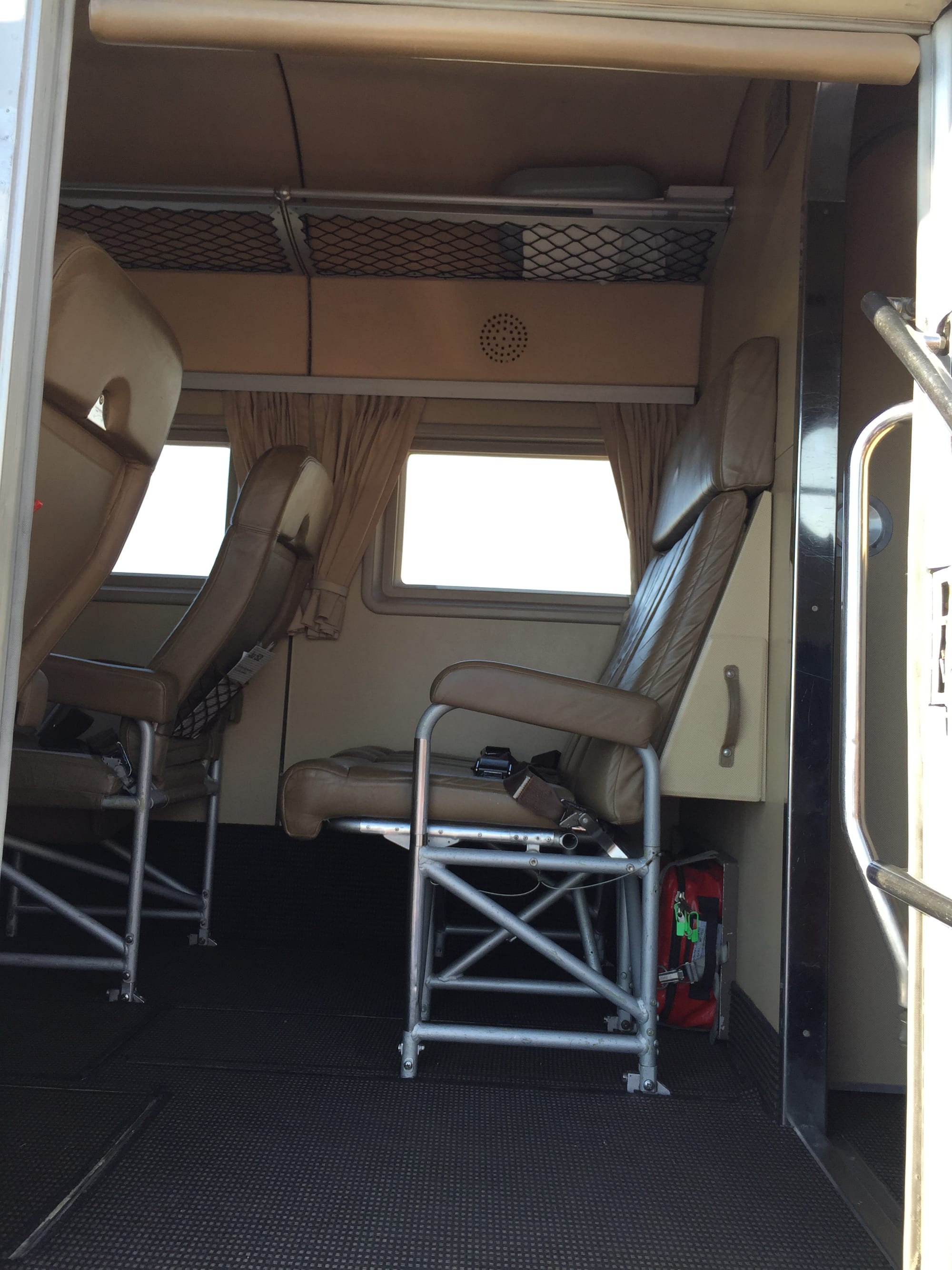
The Deutsche Luft Hansa cabins of the 1930s certainly didn’t include loudspeakers, but the netted hatracks are relatively authentic, if not originals.
Historically, it seems (though the full provenance of this photo is not verified) that the aircraft in historic Luft Hansa service was outfitted with roller blinds rather than curtains.
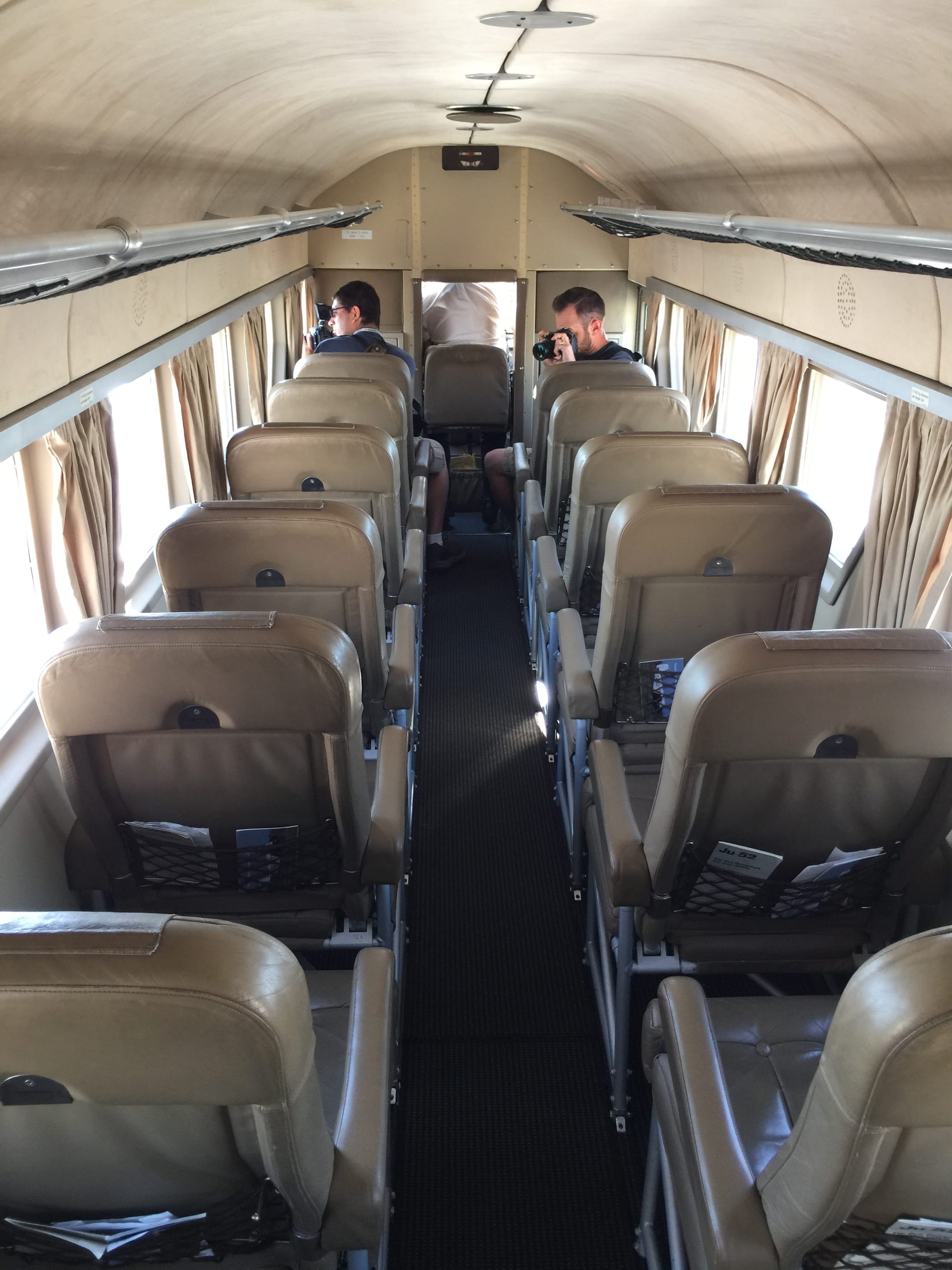
Come back, modern Lufthansa seats, all is forgiven! Tante Ju was not built for the comfort of the taller passenger of the 2010s, and neither were the seats on board, lacking many of the engineering advances in recent years.
But with windows that big, I can forgive a lot in a seat.
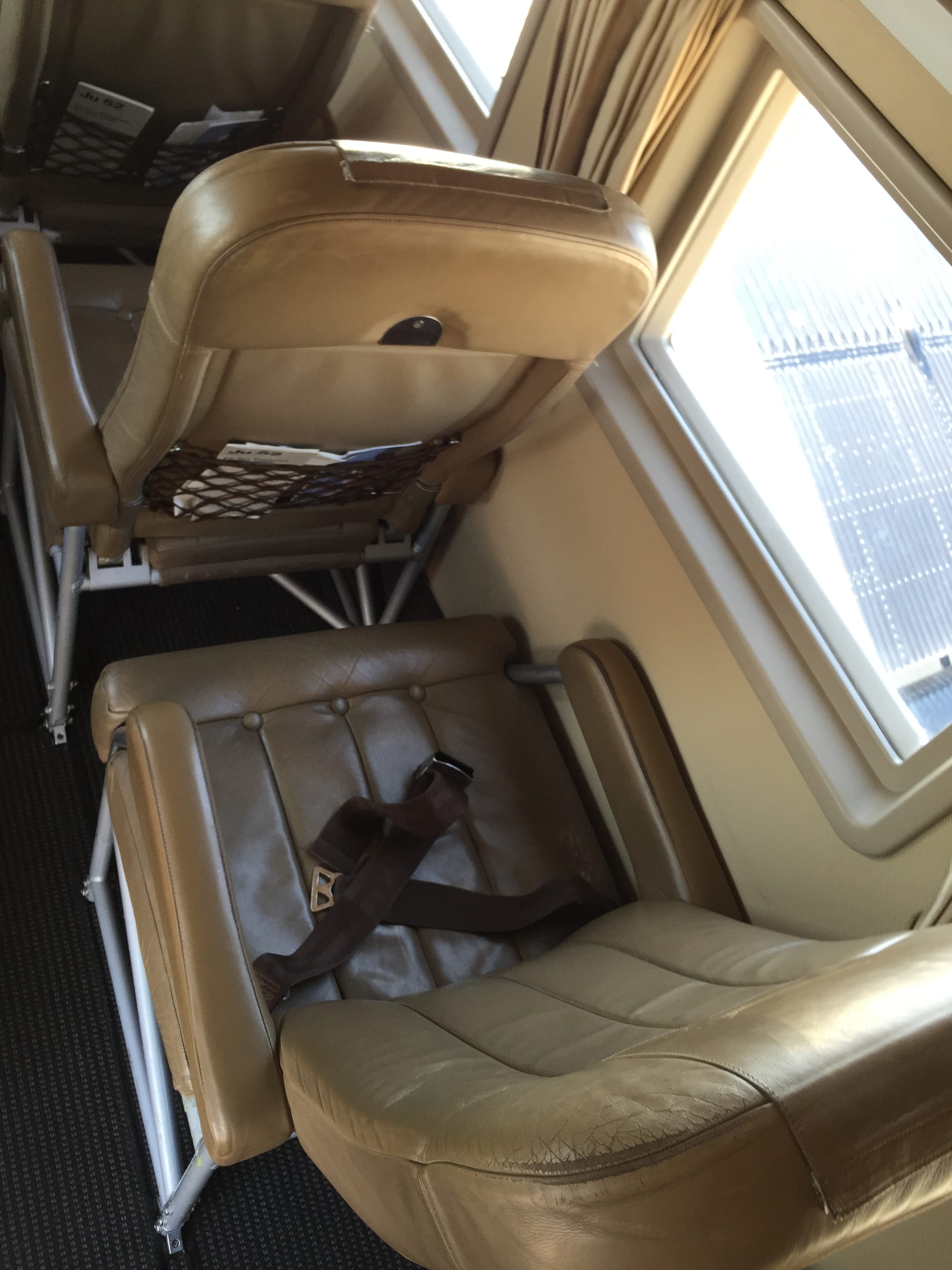
The corrugated effect on the safety card was an absolutely delightful touch.
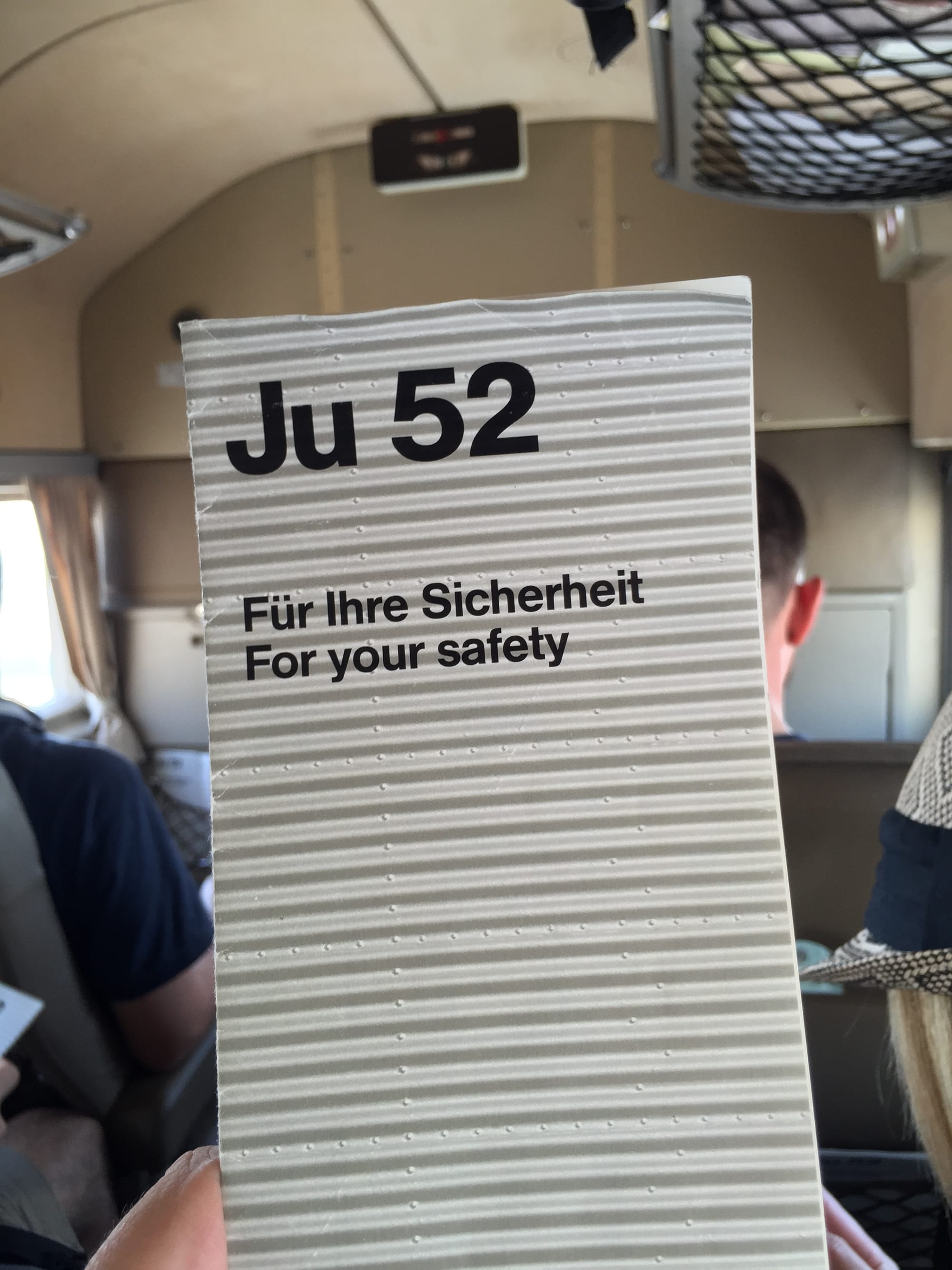
I was rather tickled how the icons — such as for the take-off and landing section — were modern jet aircraft rather than Tante Ju.
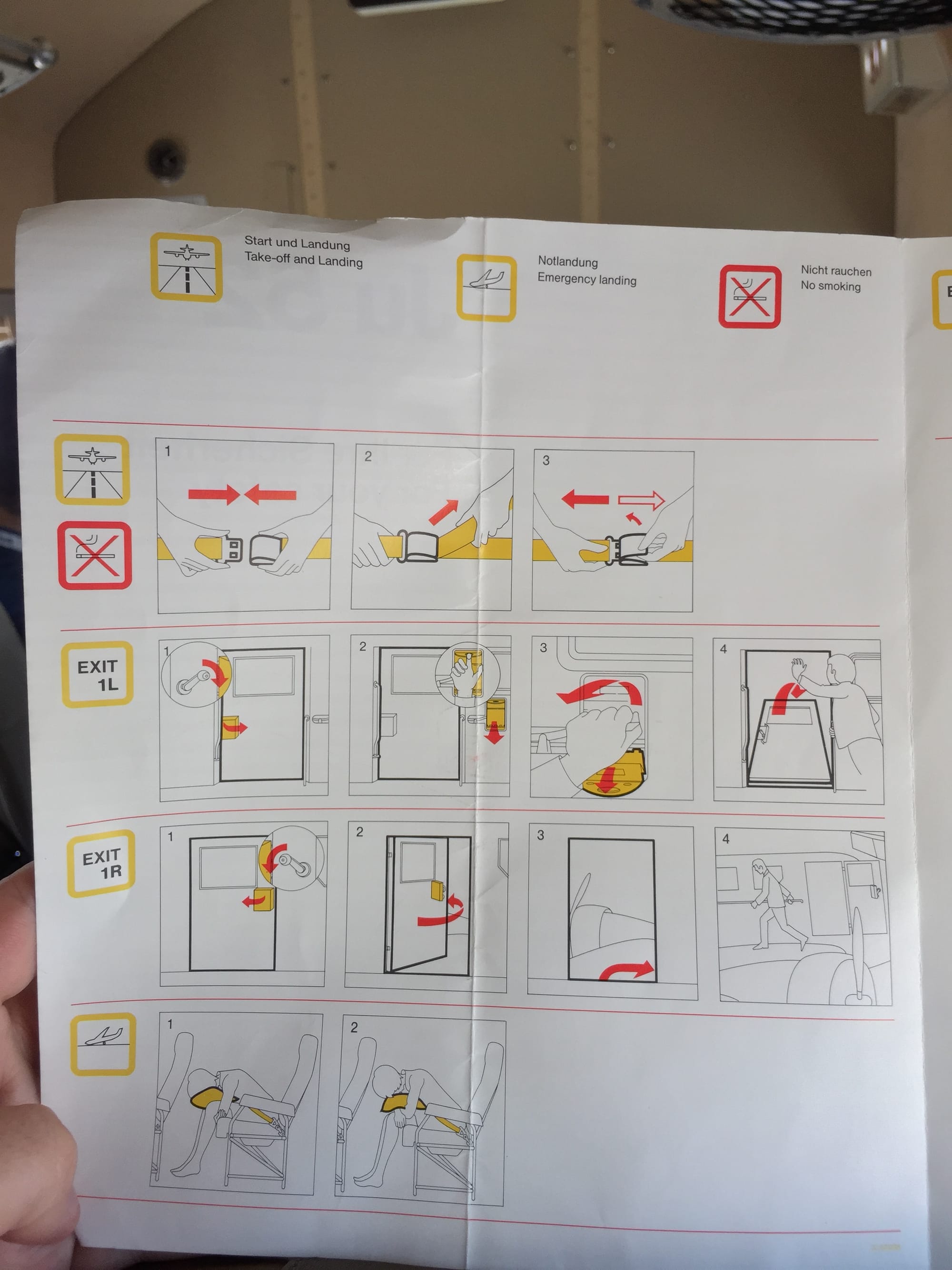
The escape route options were perhaps the easiest I’ve ever seen on an airline safety card, and I remember noting that the artist had taken the time to include oddly specific detail about the wing and empennage control surfaces.
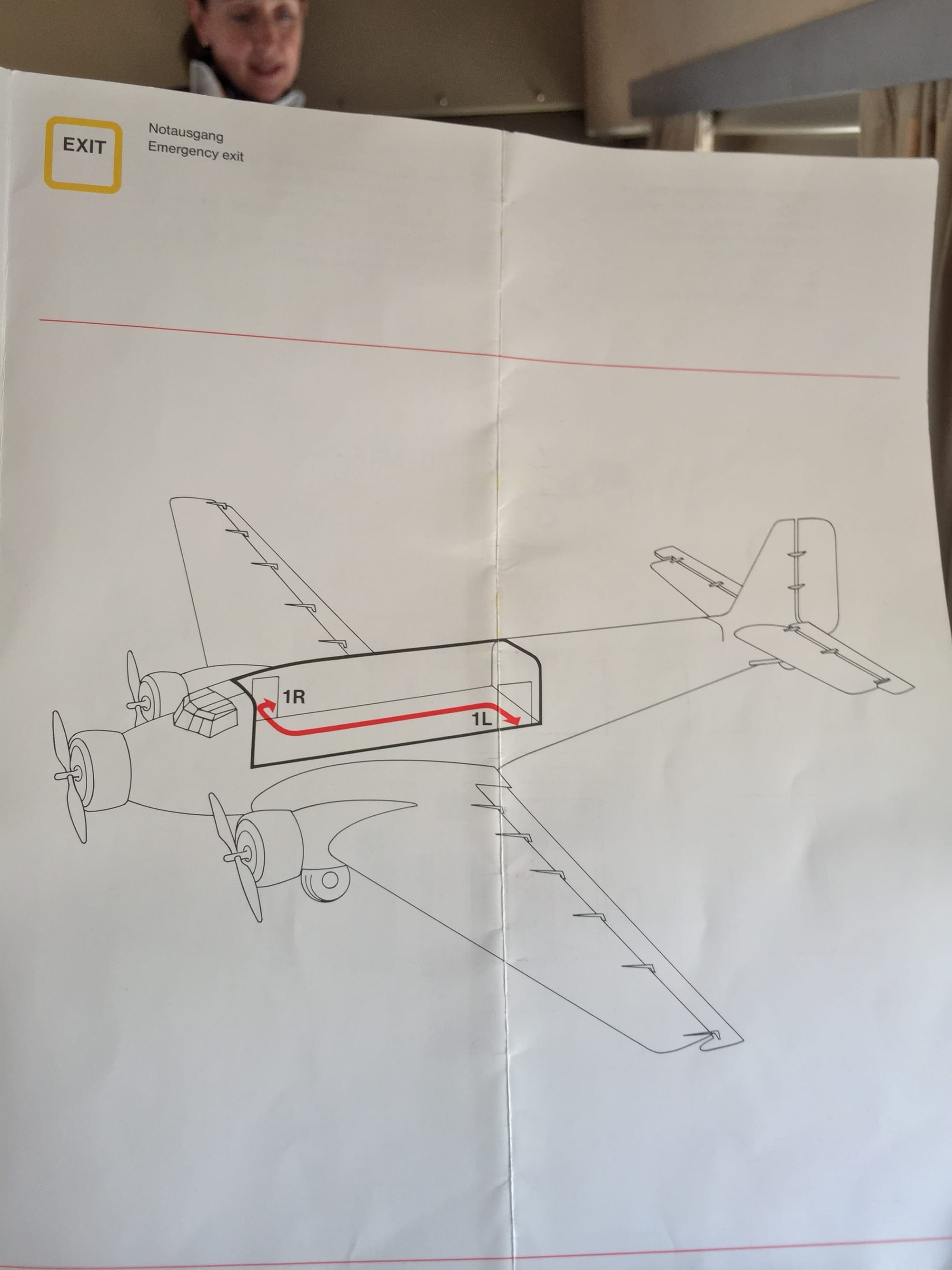
You often here a phrase like “all our aircraft are slightly different” during a safety briefing, but this was certainly a case where that was true.
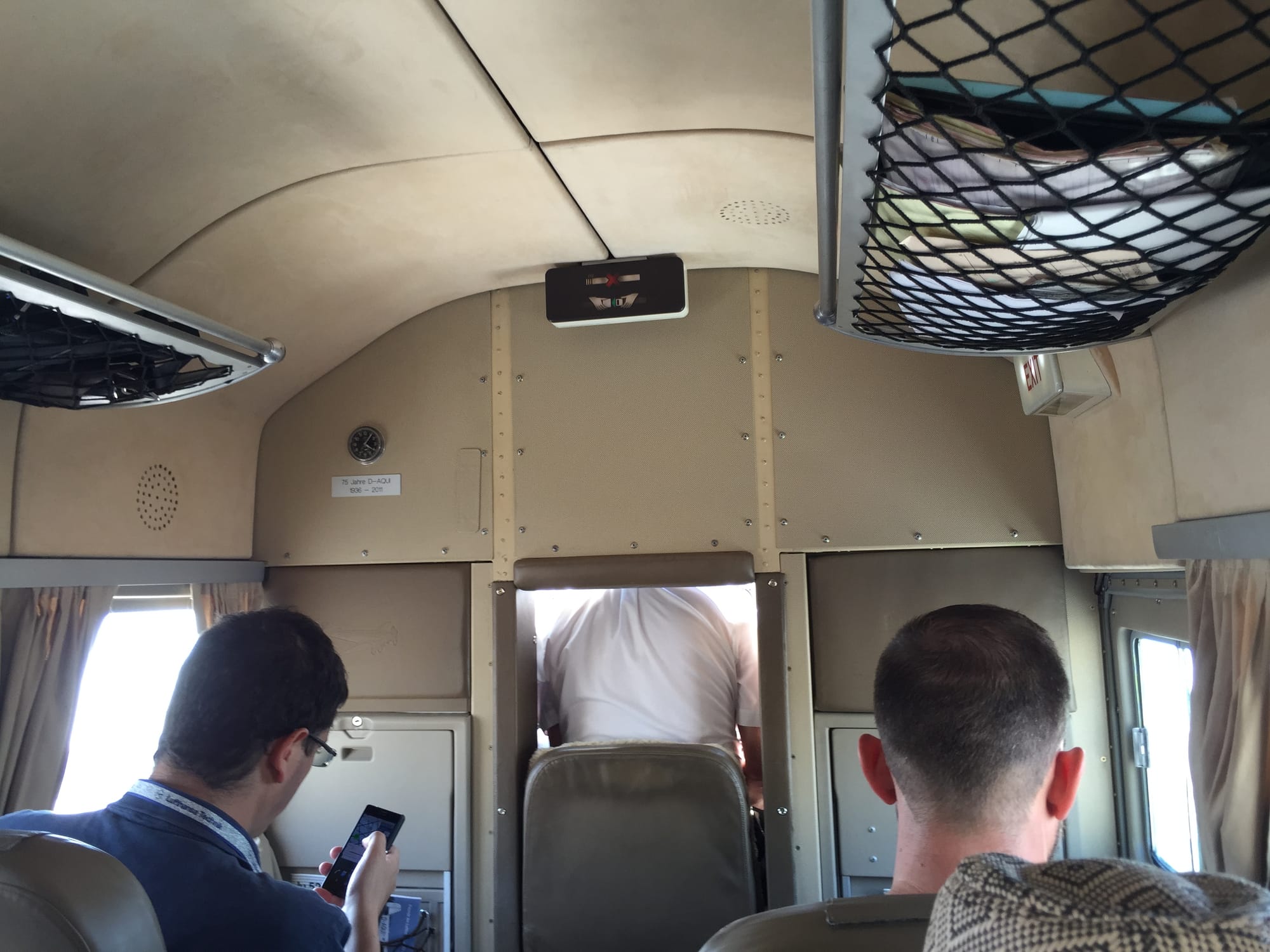
At the front of the cabin, a third pilot seat unfolds to allow for a full flight deck complement of three.
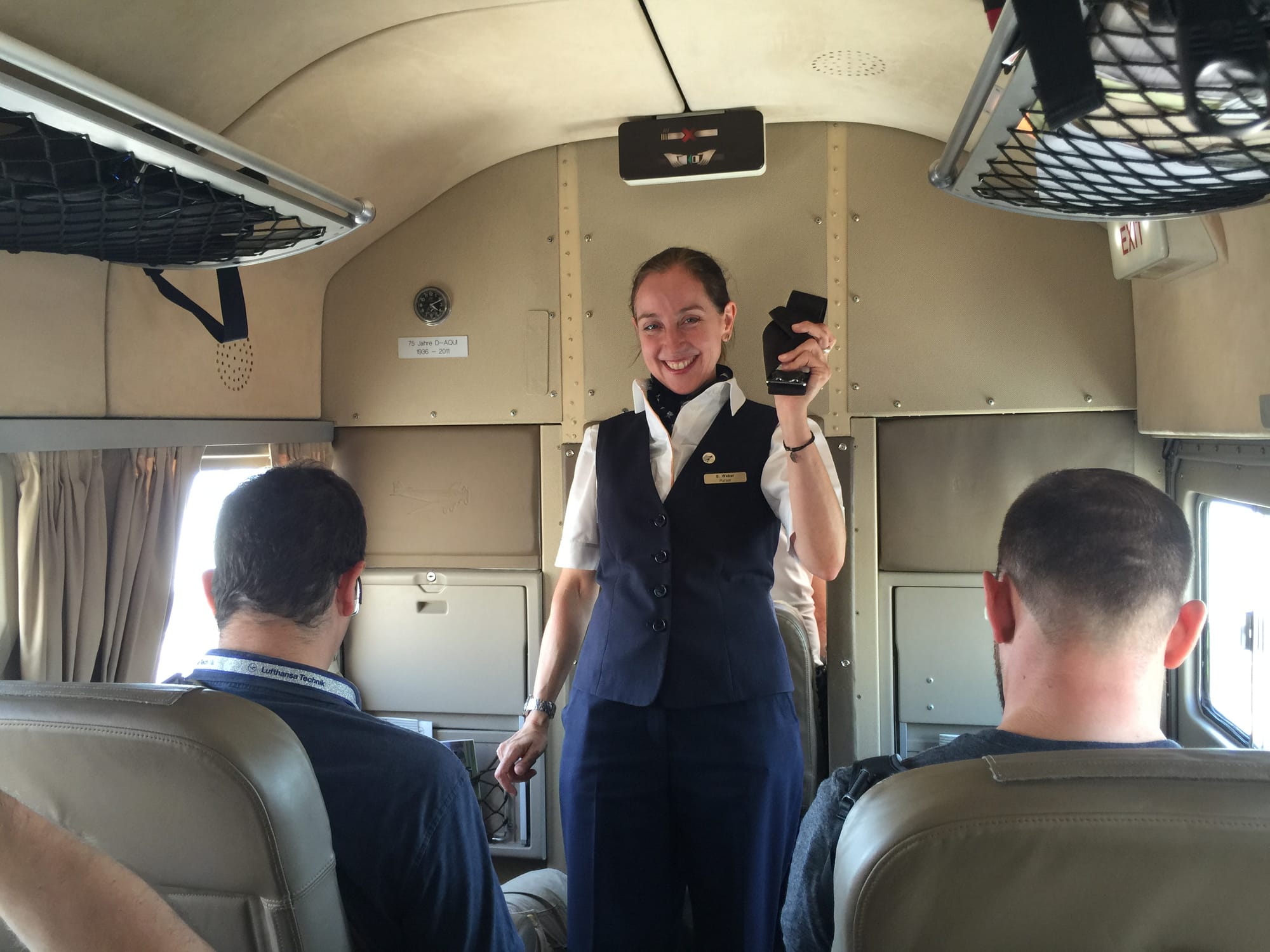
Seatbelts were simple lap belts, with, you’ll be stunned to learn, an entirely manual safety demonstration.
Unlike in her commercially operational lifetime, smoking was verboten onboard, with a modern lighted sign to that effect.
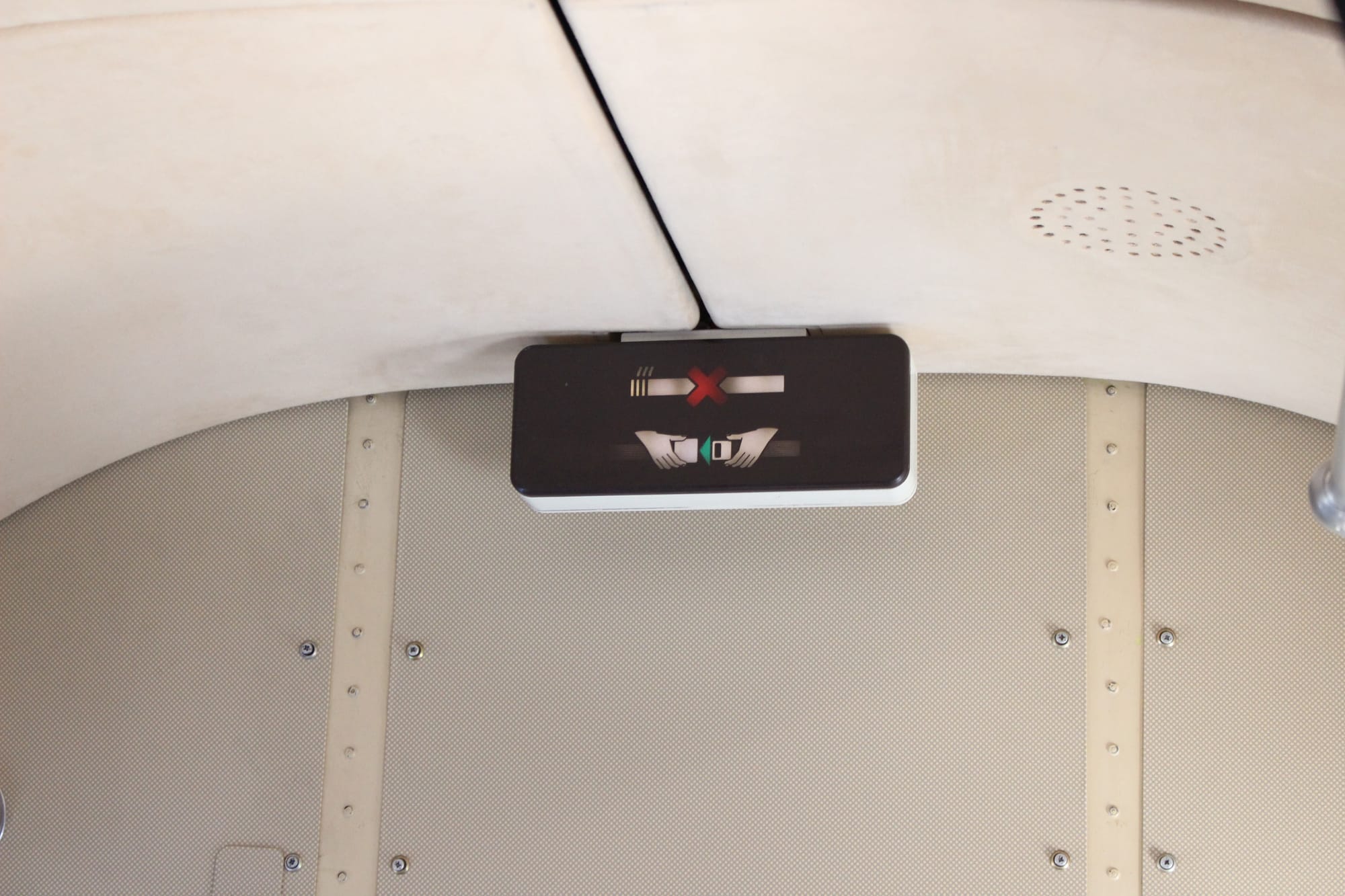
With a throaty rumble, Tante Ju’s engines spun up, her modern propellers (a nod to newer noise abatement regulations) pulling us into the sky surprisingly quickly.
This is definitely one where you want your sound up to hear that engine rumble.
Read on for more details of our flight — but first, sign up so you’re the first to know when we release our next features.
Truly, this was one of the few times when applause on landing was genuinely merited.
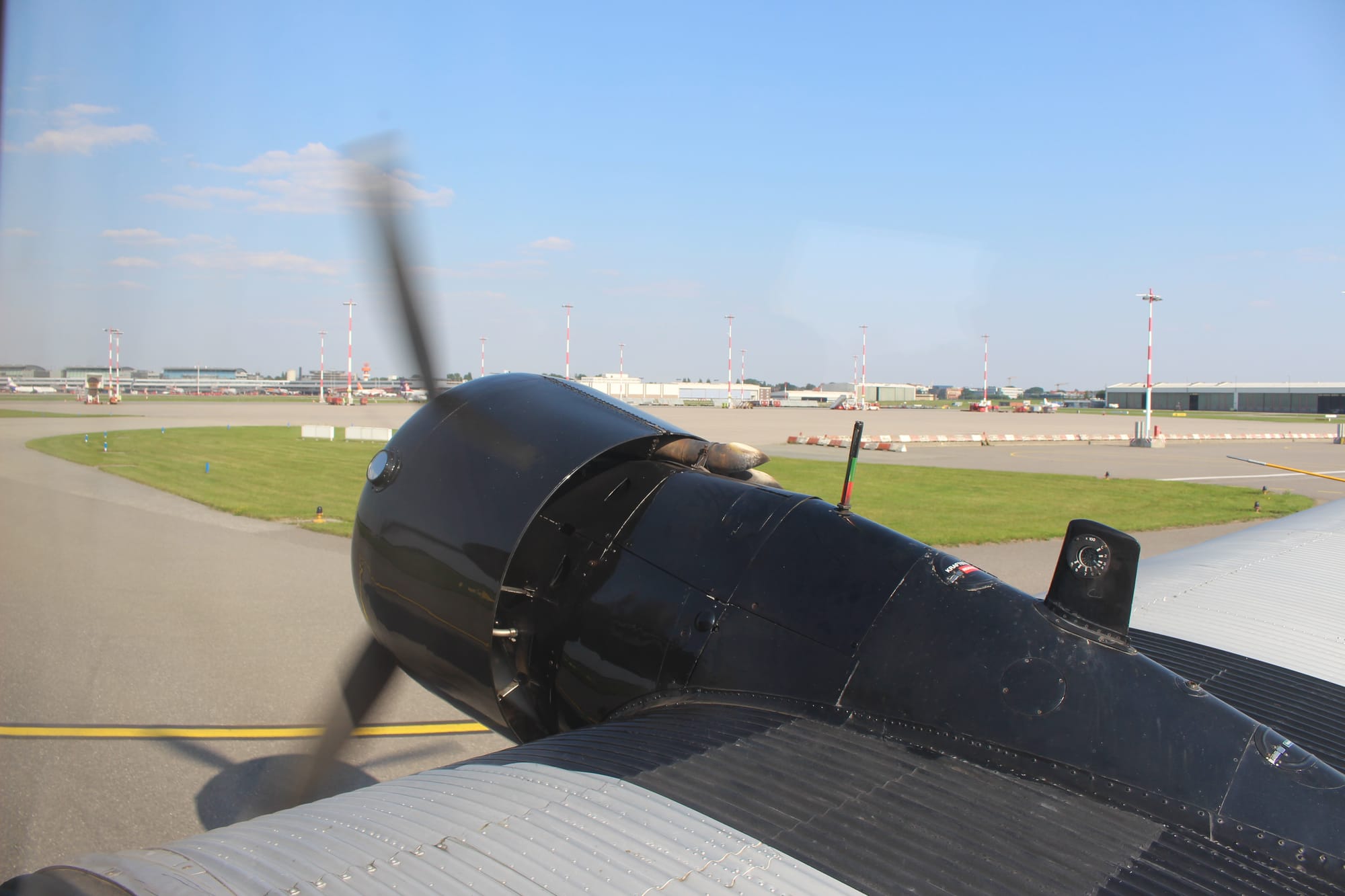
Taking off in a vintage airliner from a modern airport is a real trip, between the taildragger wheel lifting off to being totally airborne remarkably swiftly.
Tante Ju certainly didn’t need the full length of the Fühlsbuttel runway to take off.
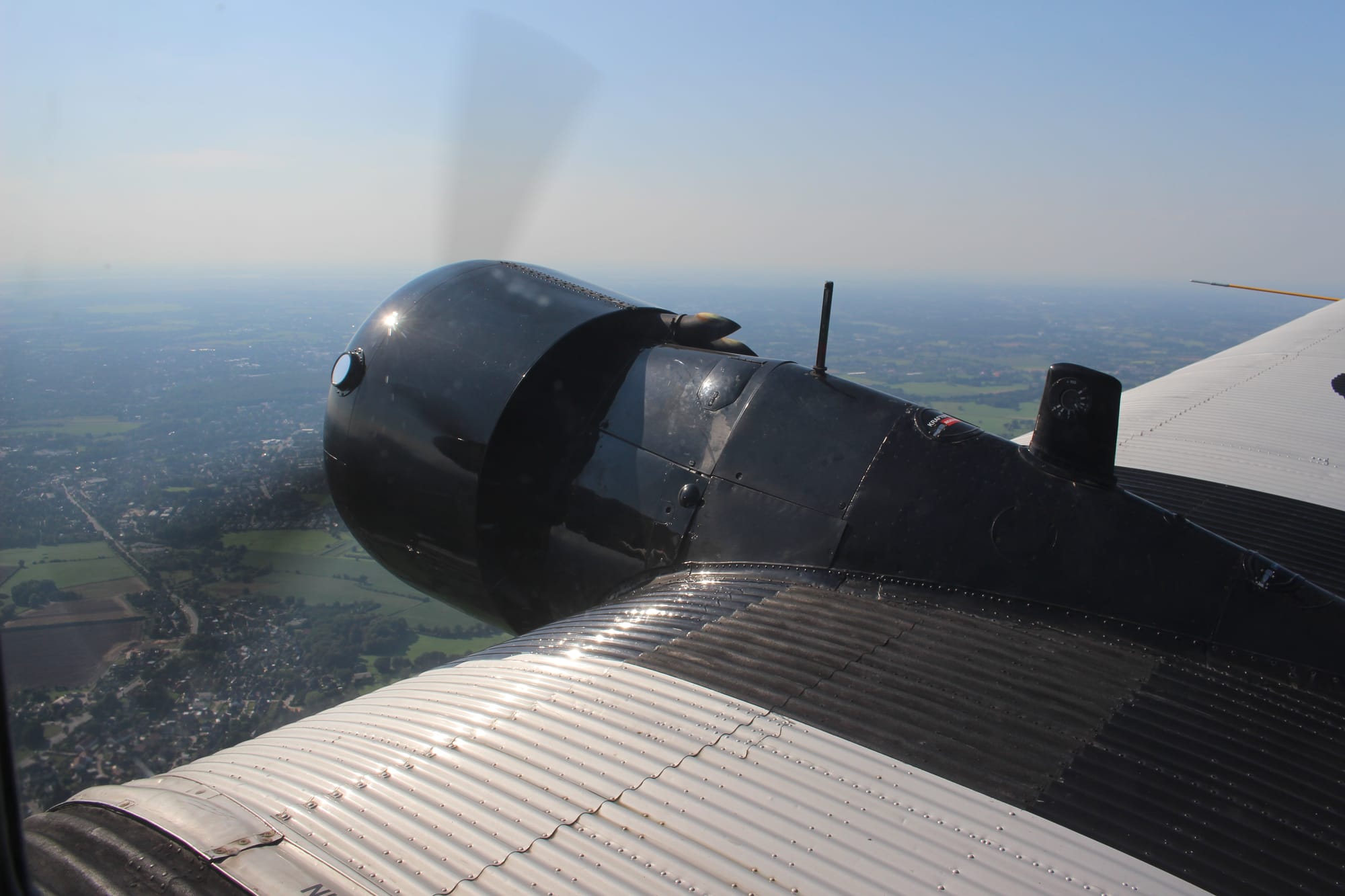
I’m certainly partial to a good wing photo, but Tante Ju’s — showing those part-flaps, part-aileron trailing edge control surfaces clearly — are some of my favourites.
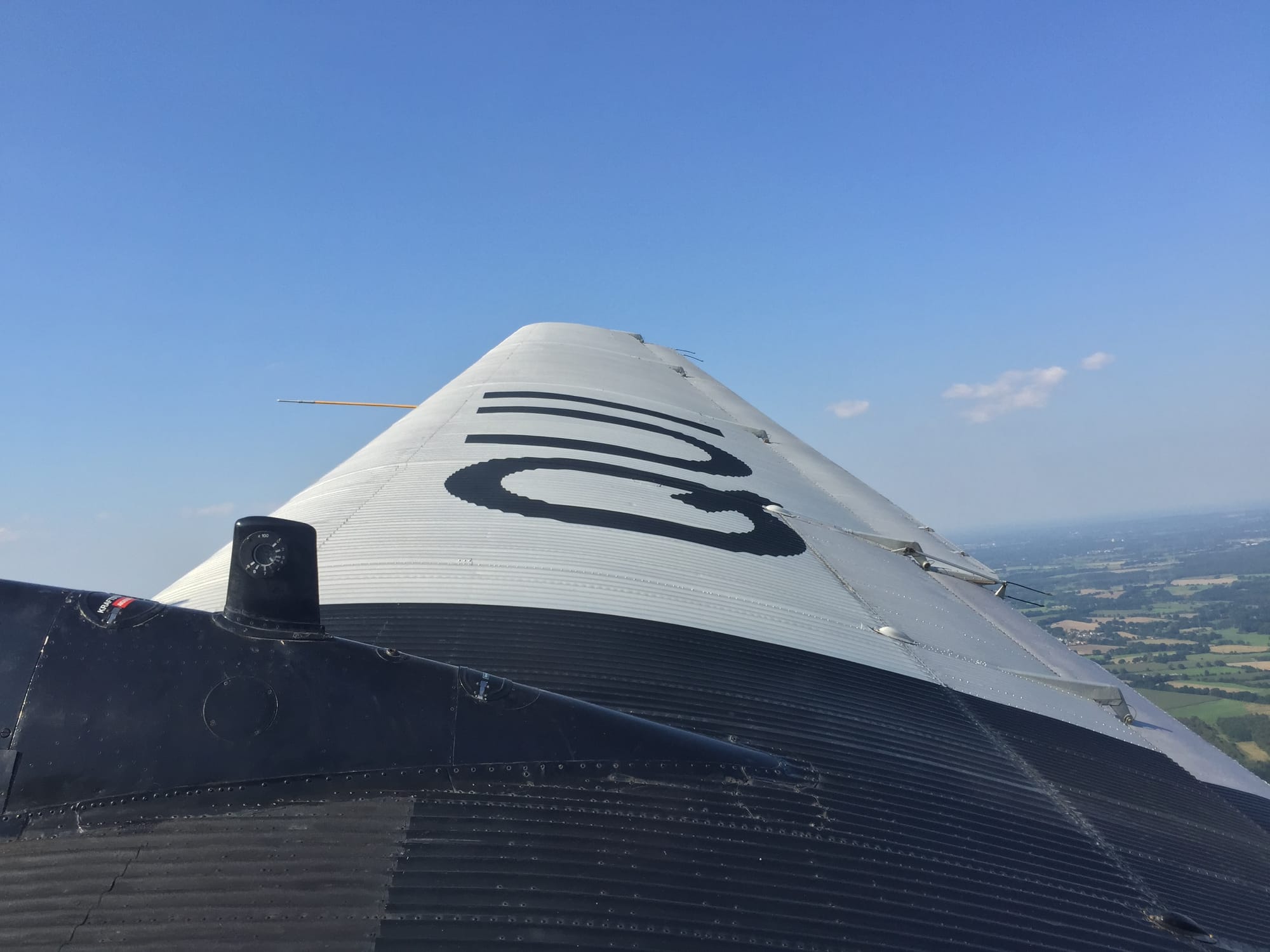
Helpfully, with a planeful of aviation journalists and #avgeek enthusiasts, there was a fair amount of passing of cameras and phones around for shots out of both sides of the aircraft.
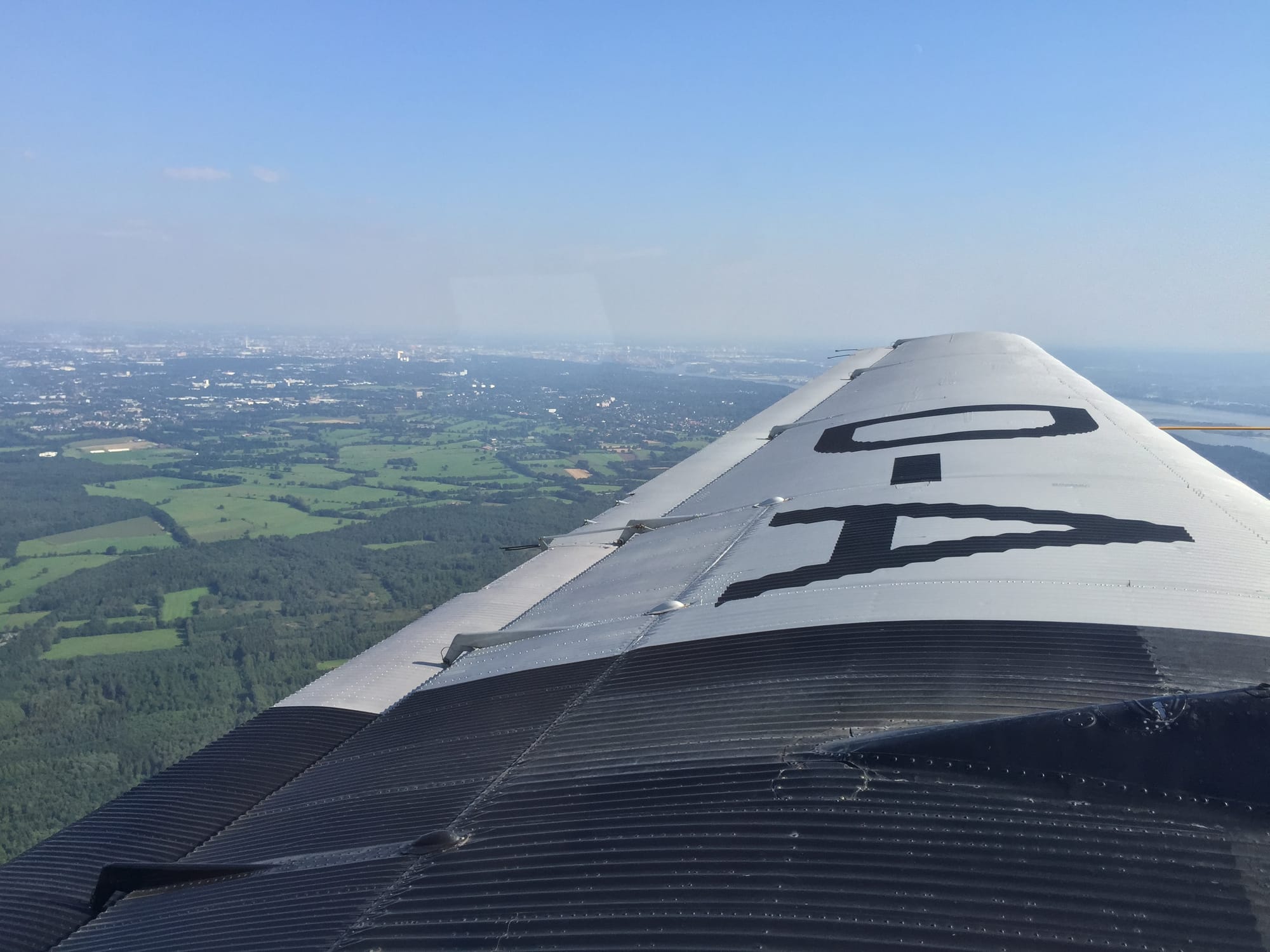
It was fascinating to watch the exterior engine gauges revving up and down from takeoff to cruise and as we banked over Hamburg.
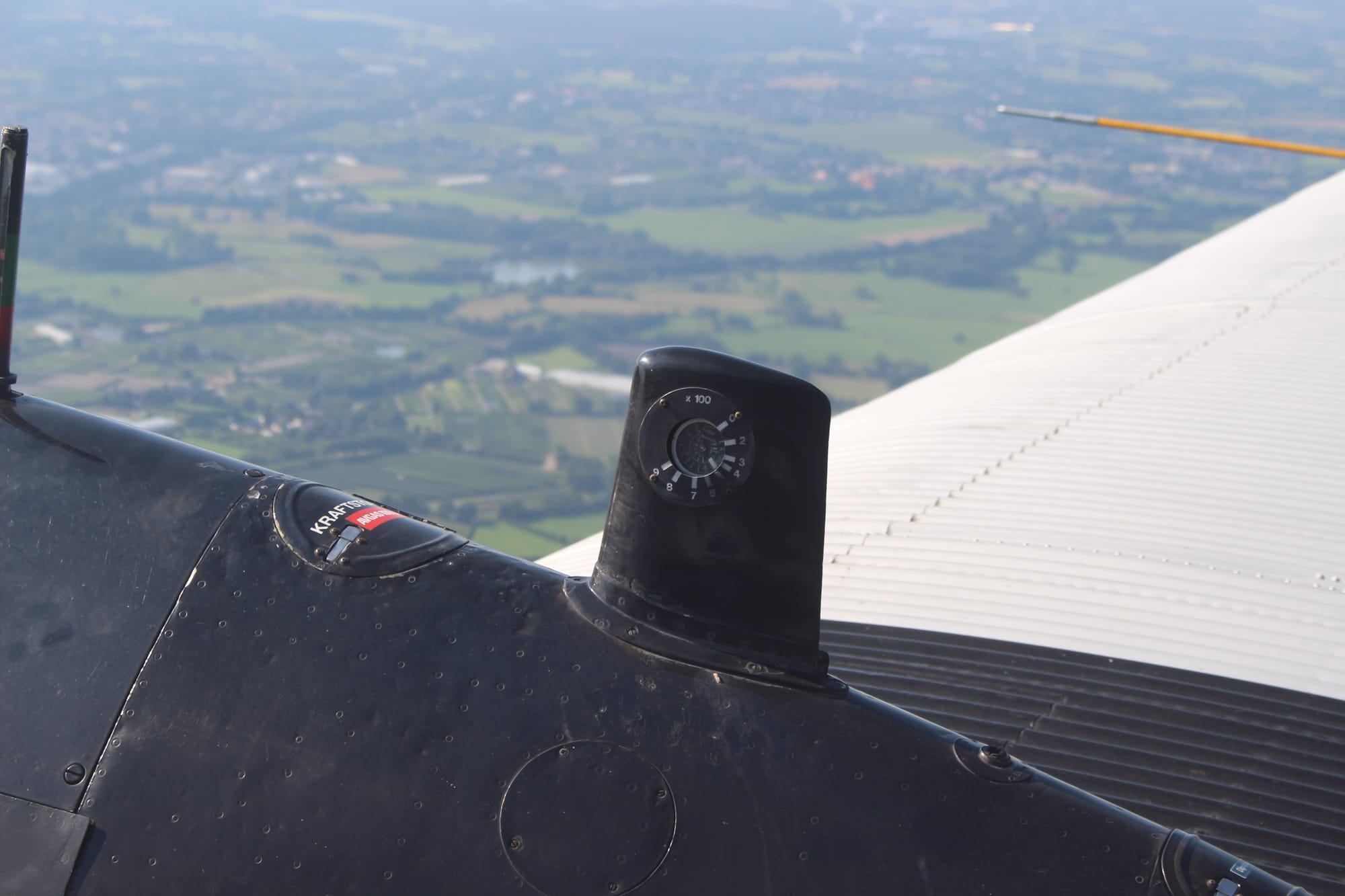
Our route took us out over the Elbe to Airbus’ factories at Finkenwerder, to the west of central Hamburg.
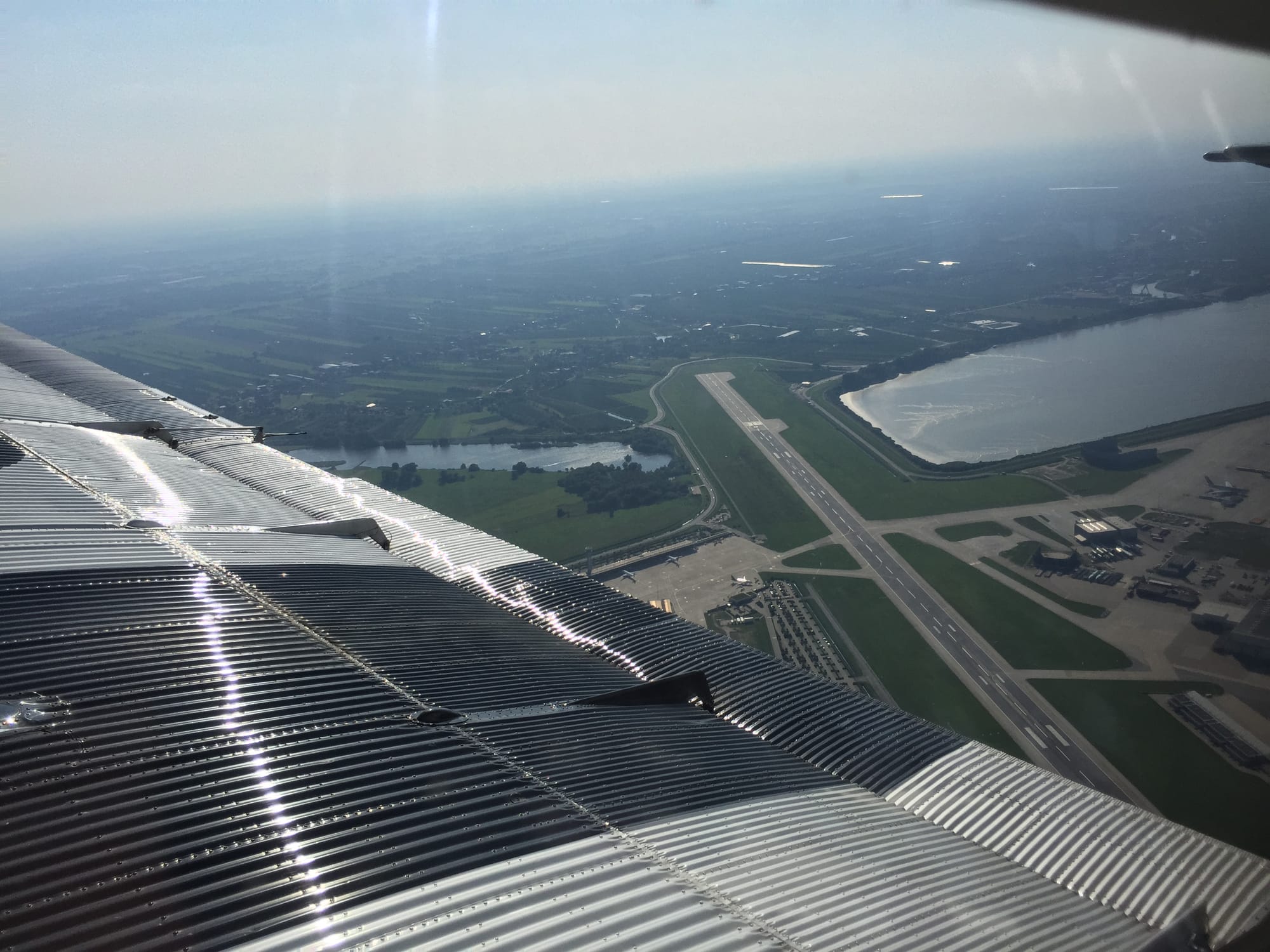
Banking over the city offered glorious views of Hamburg itself.
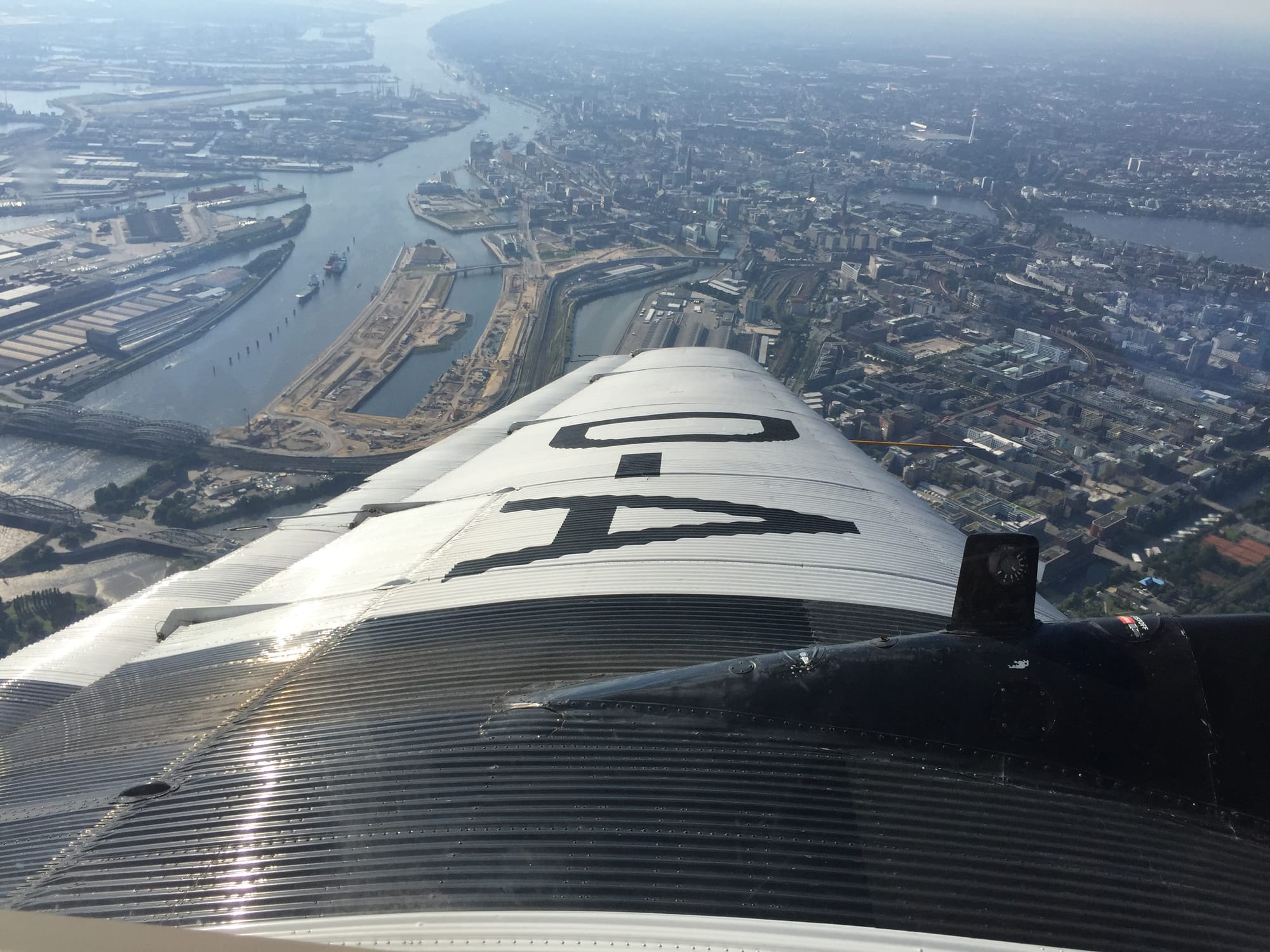
It did, however, offer excellent shots of the Hamburg Messe, home to the annual Aircraft Interiors Expo.
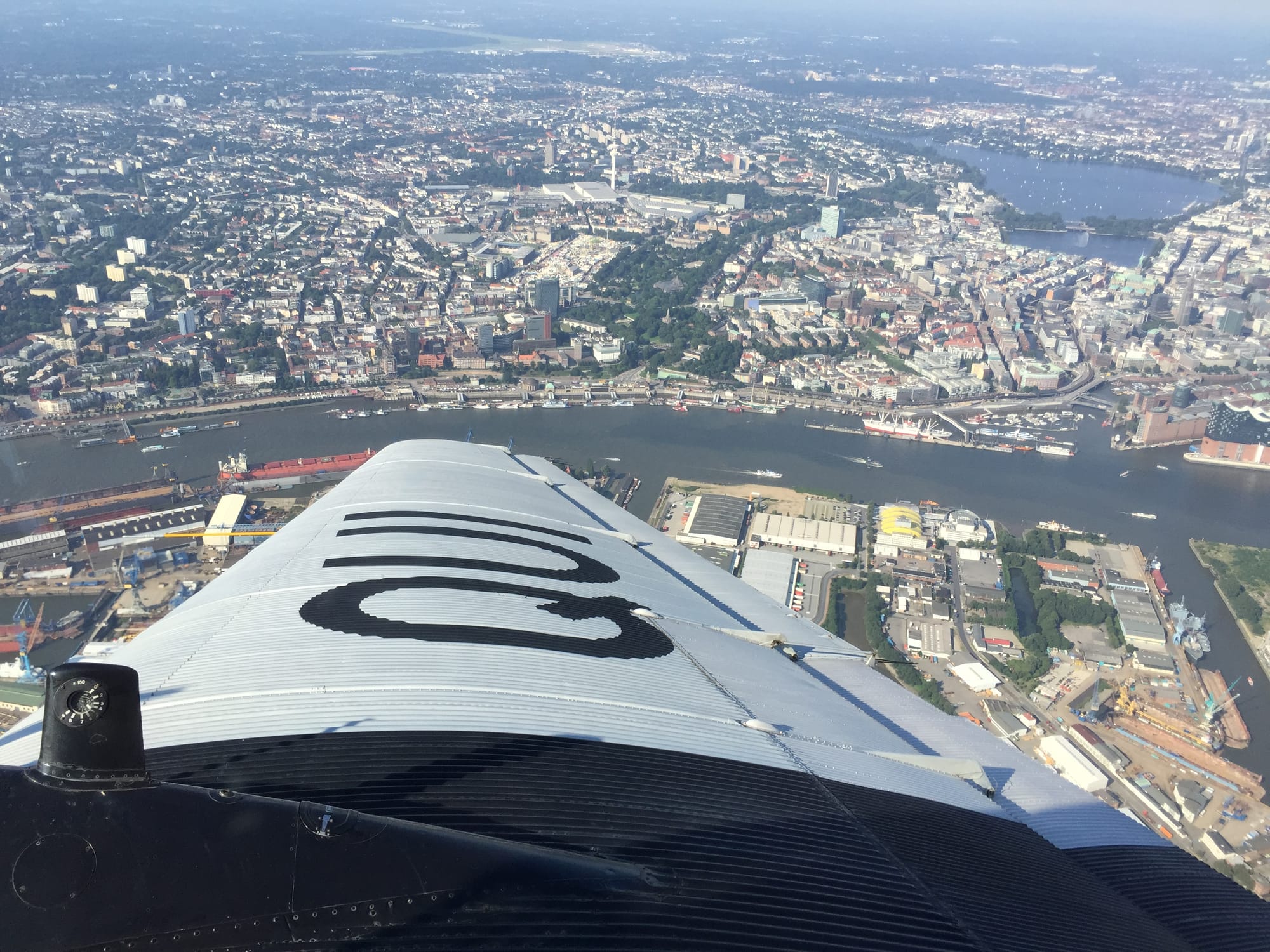
All too soon, the joyride was over, but that did give us an opportunity to nose our ways into the flightdeck, with its fascianting combination of original — through to the corrugated sidewalls — and new electronic instruments.
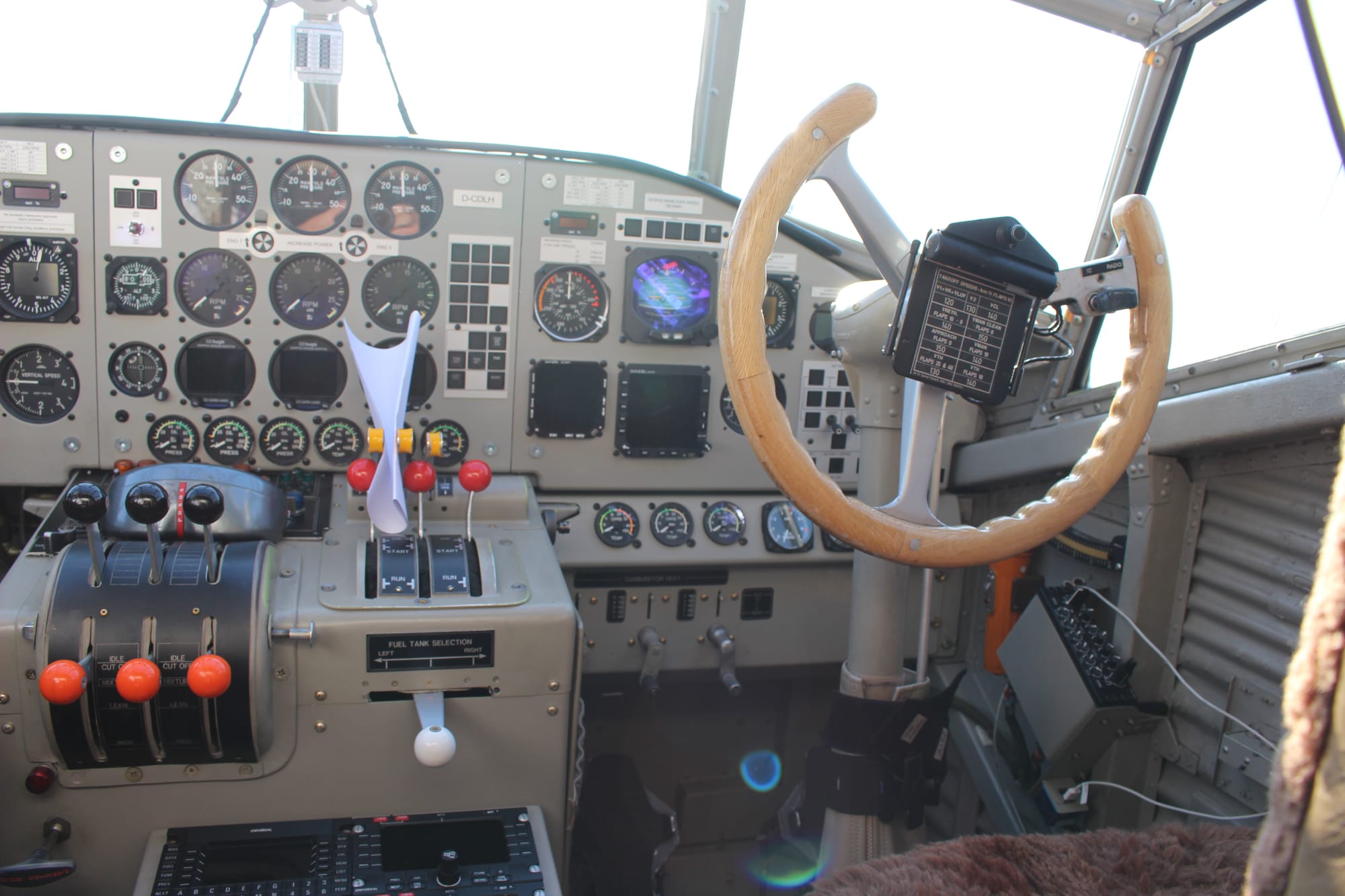
It’s certainly been a while since I saw three engine controls rather than two or four.
Checking back, indeed, if these flights count as commercial passenger service, Tante Ju can be argued to have outlived the trijet, with the McDonnell Douglas MD-11’s farewell flights in late 2014.
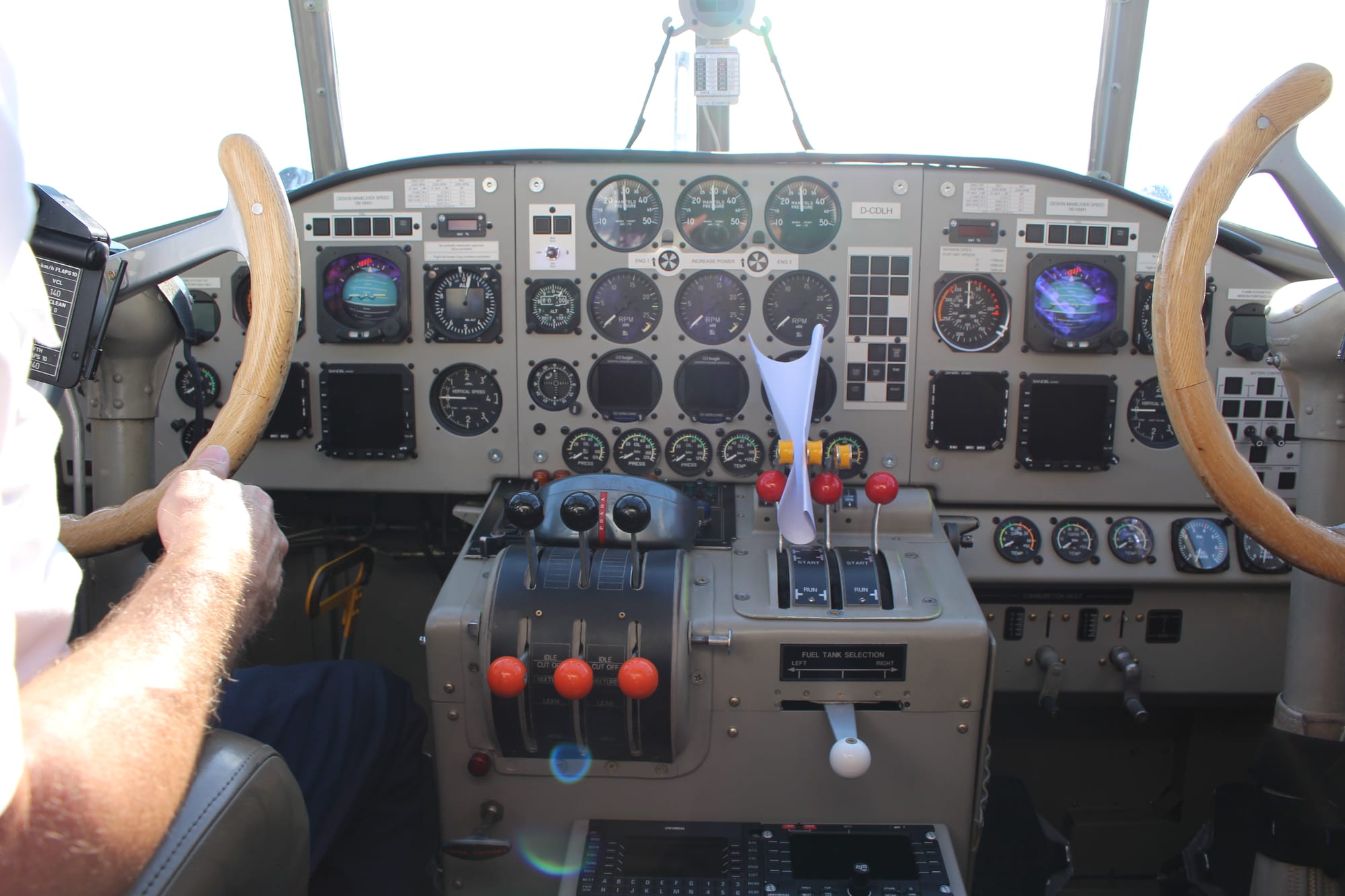
Working back through these photos and videos has brought back so many incredible memories of that sunny summer airshow day in Hamburg, but one of the things I remember most was the sheer joy and love for aviation that the pilots and cabin crew onboard showed.
Farewell, Tante Ju — and looking forward to seeing you again, even if on the ground.
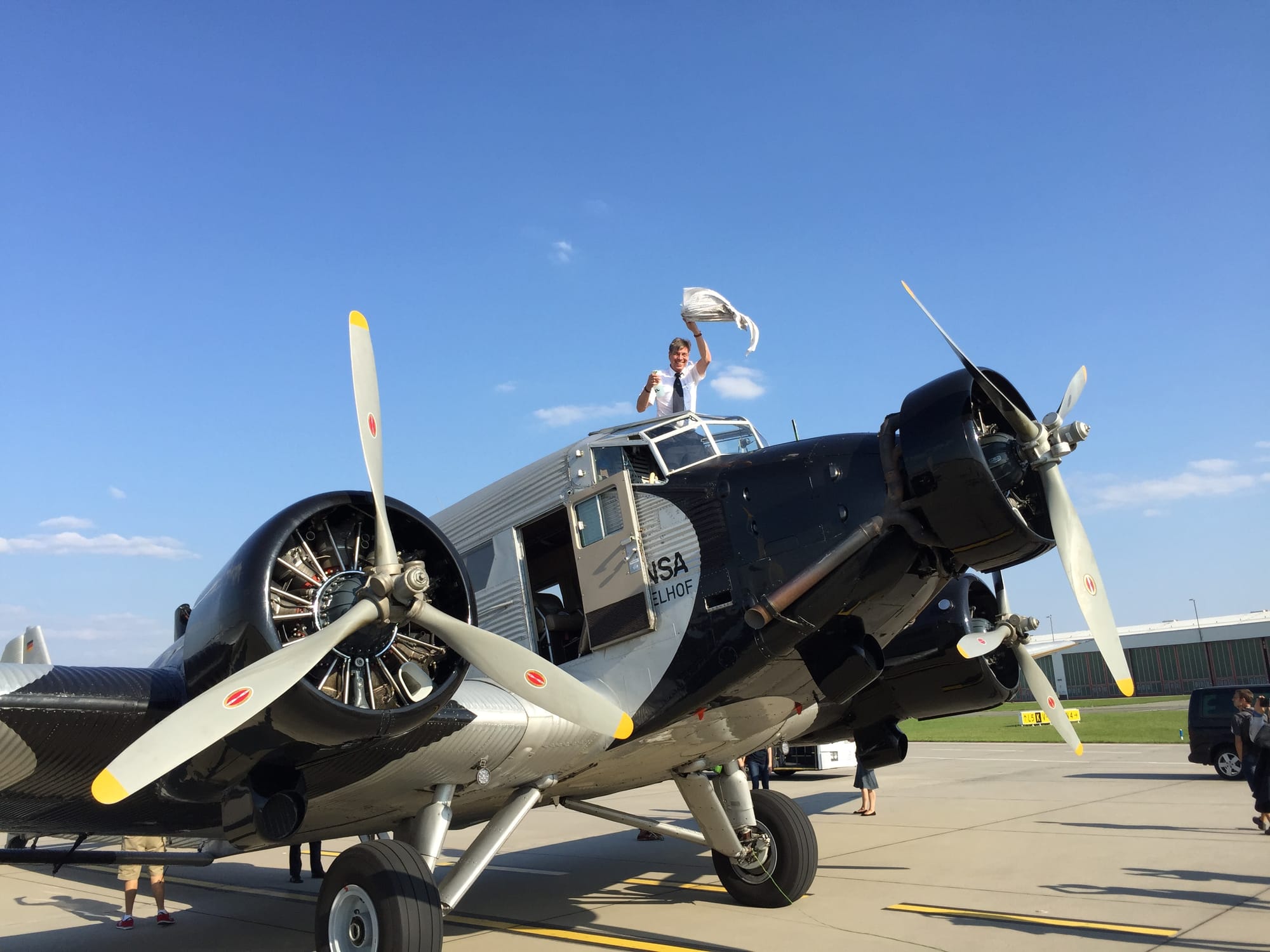
We hope you enjoyed reading our Tante Ju retrospective feature — and watching the video. We’re an independent journalist-owned publication, and we’re able to share much of our work publicly thanks to our supporters.
Become a Subscriber today, or upgrade to Pro level for our critical industry intelligence, deep-dive extended edition podcasts, and much more.

